1) Message passing programs involve multiple processes running subprograms that communicate via message passing calls. Each subprogram has private variables and communicates through message passing system calls.
2) Messages contain information about the sender, data type, length, and intended receiver. The message passing system holds this metadata for each message.
3) The message passing programming paradigm uses an explicitly partitioned address space model, where each process has exclusive access to its own memory space. Processes must explicitly partition data and send messages to share data or coordinate work.

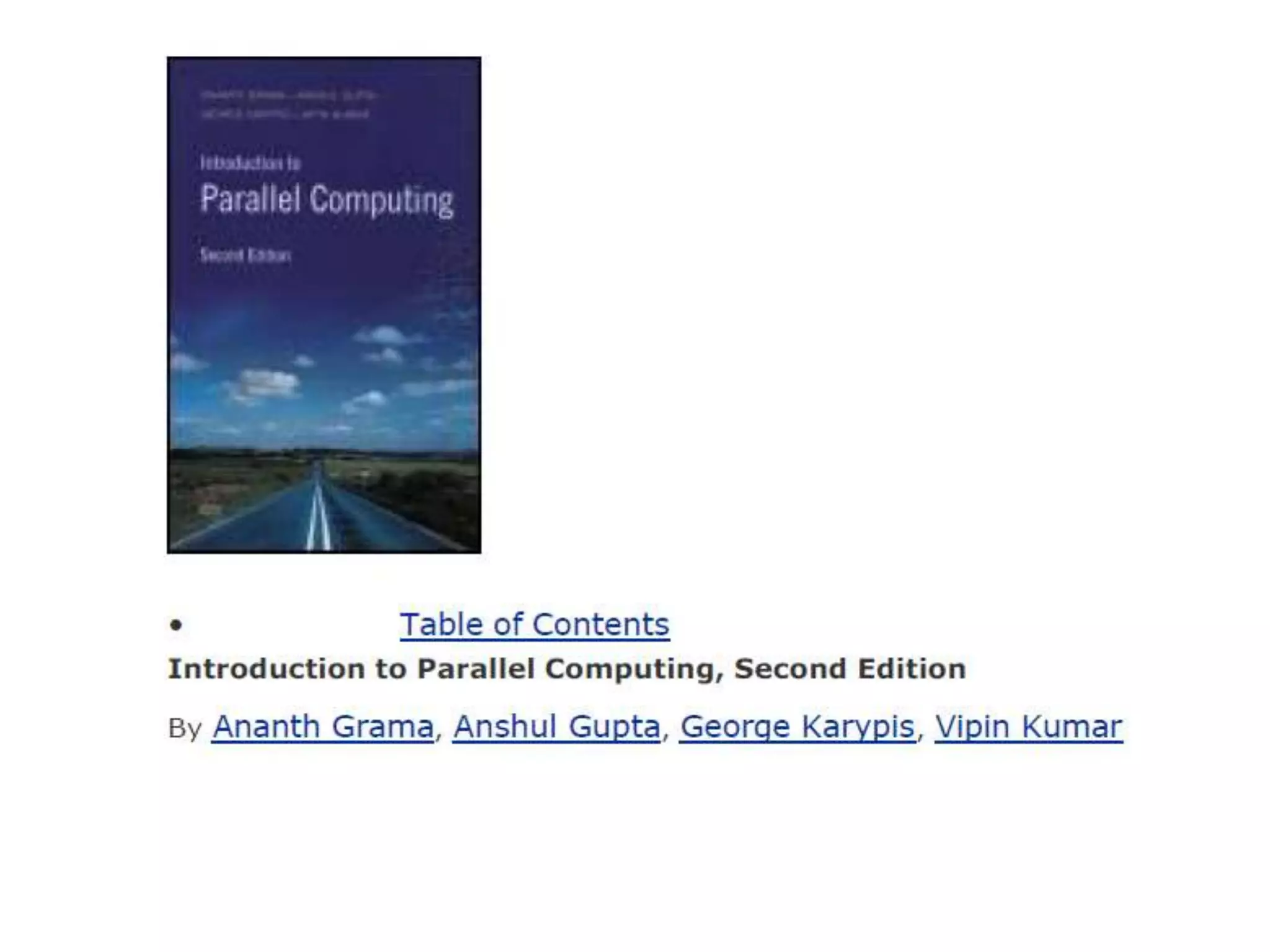
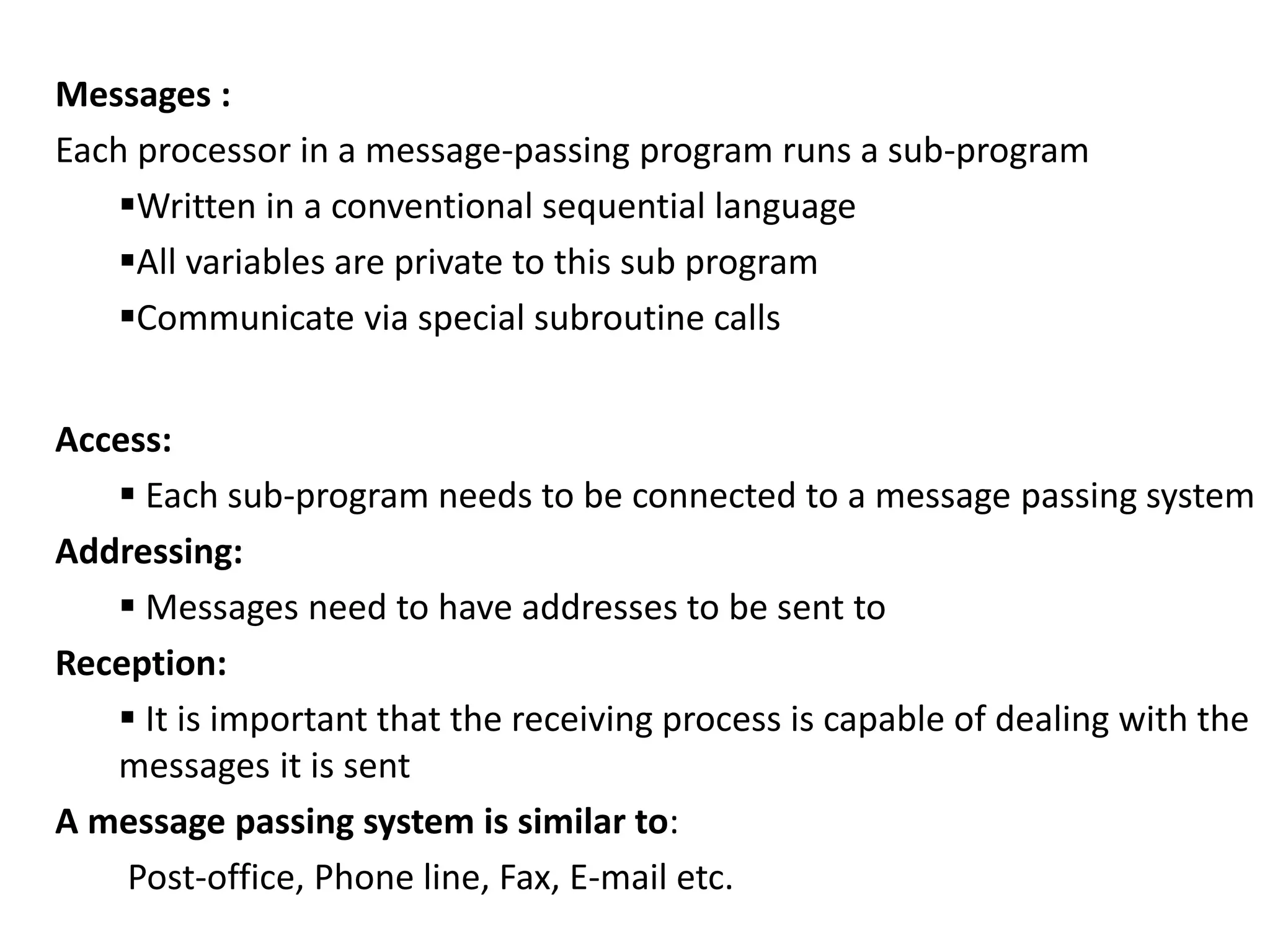

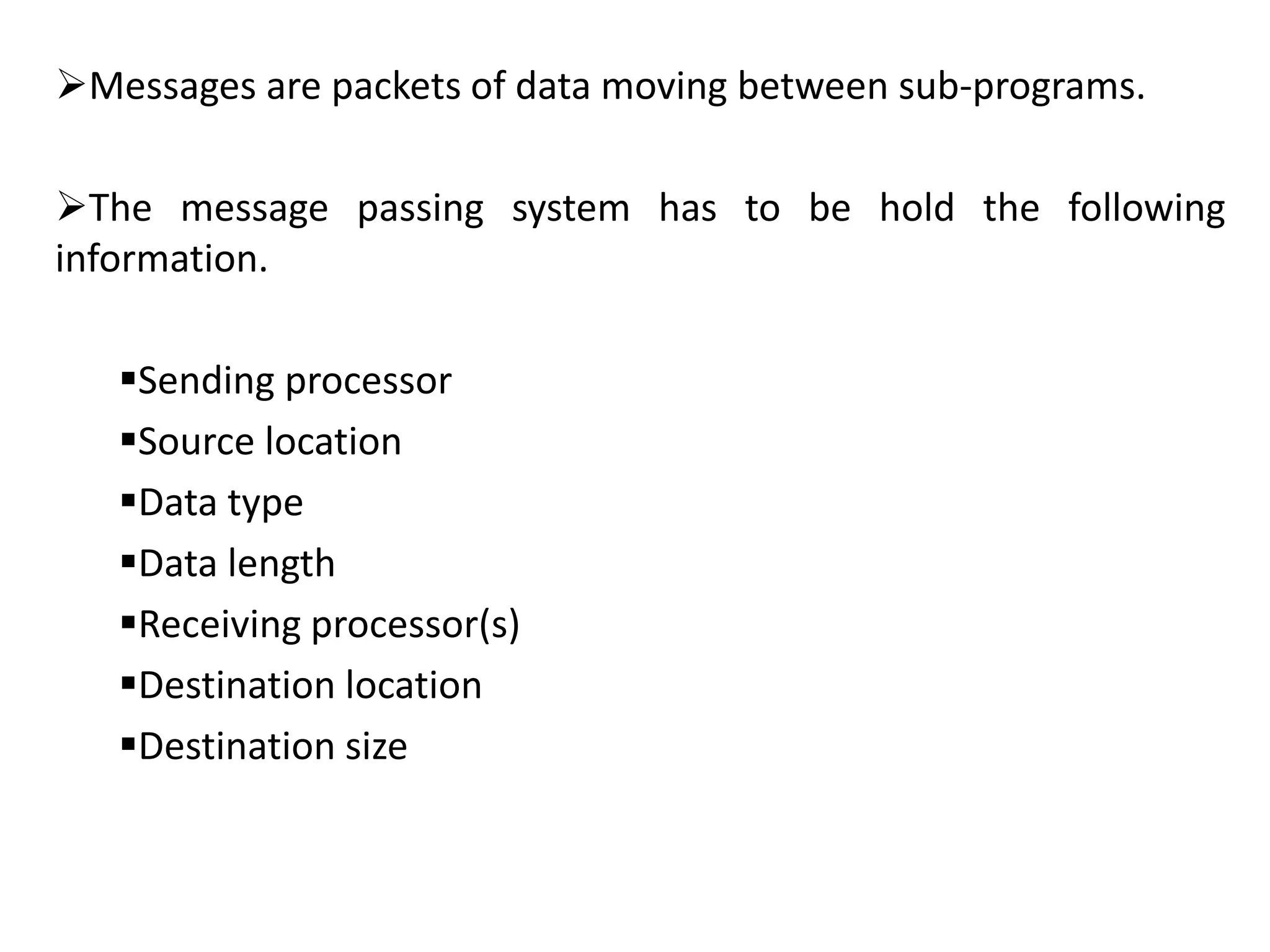
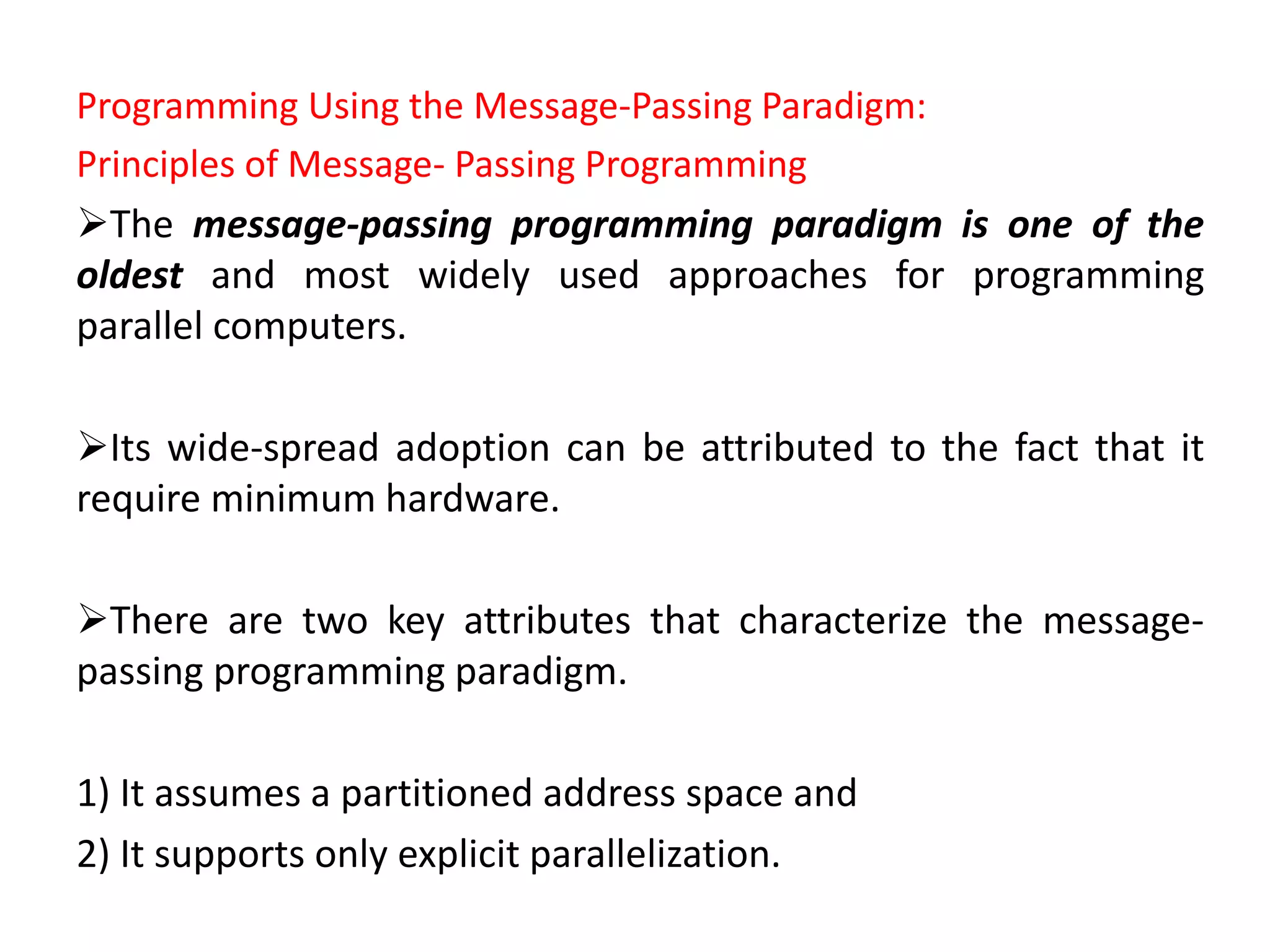
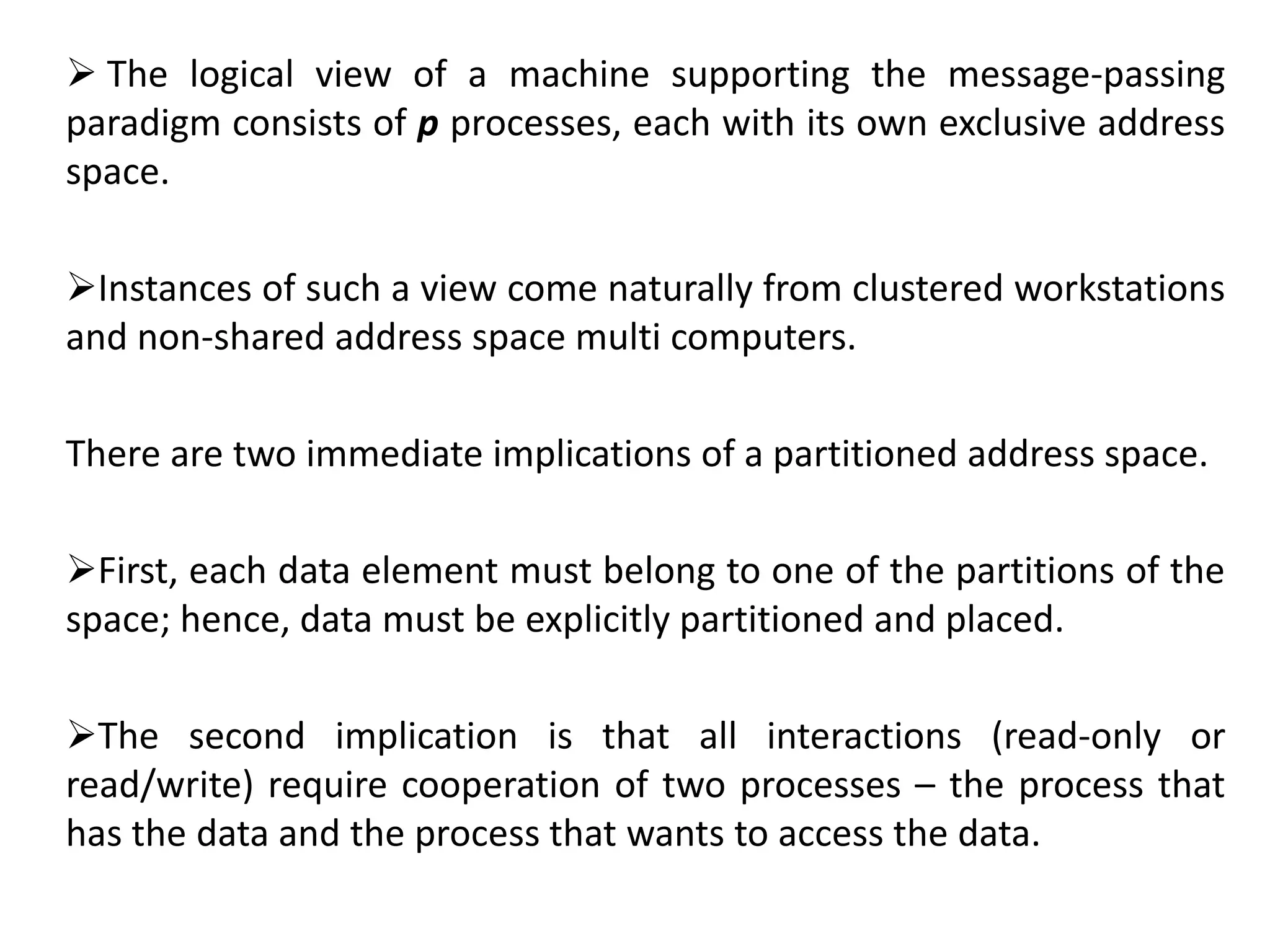
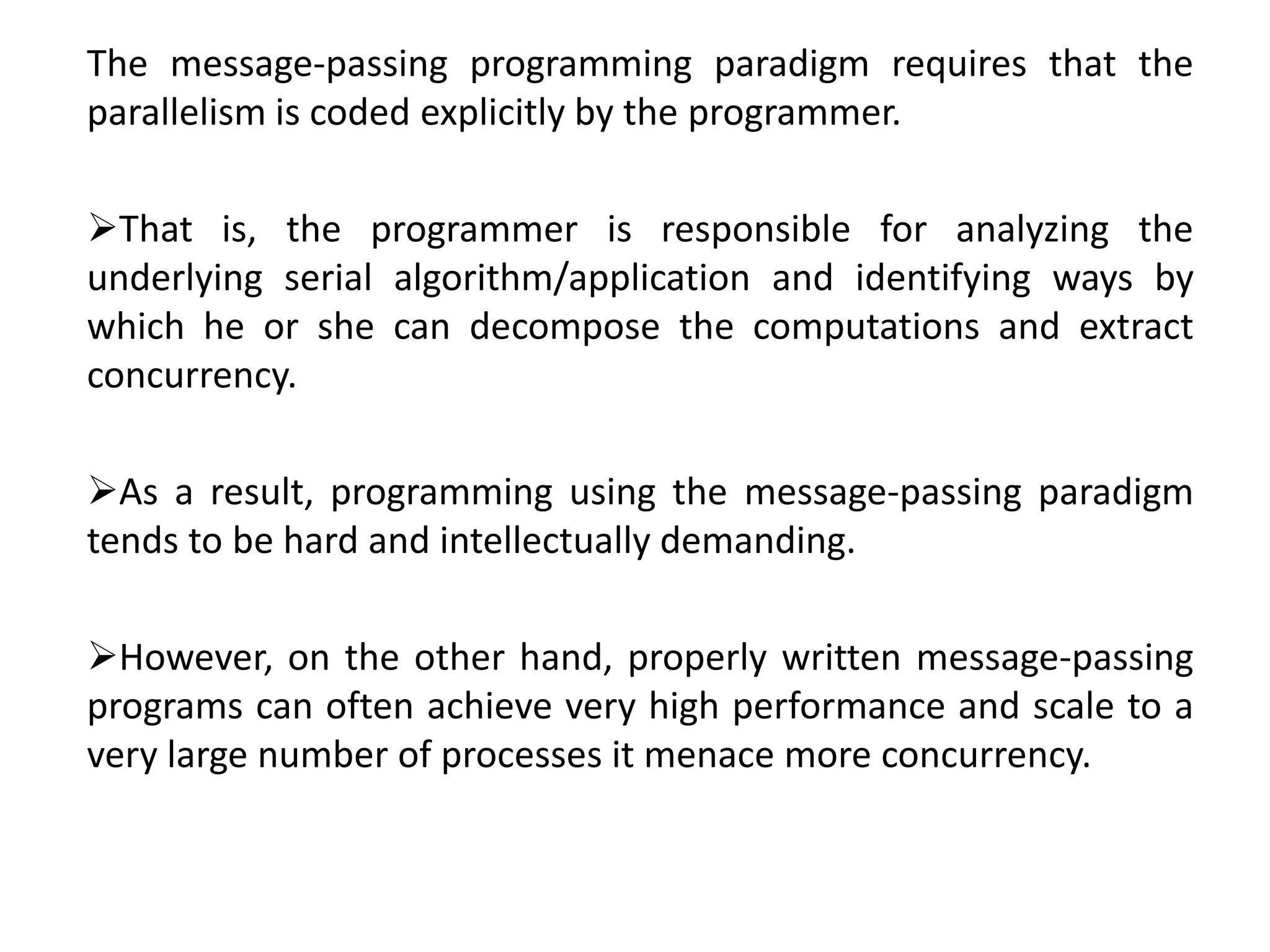
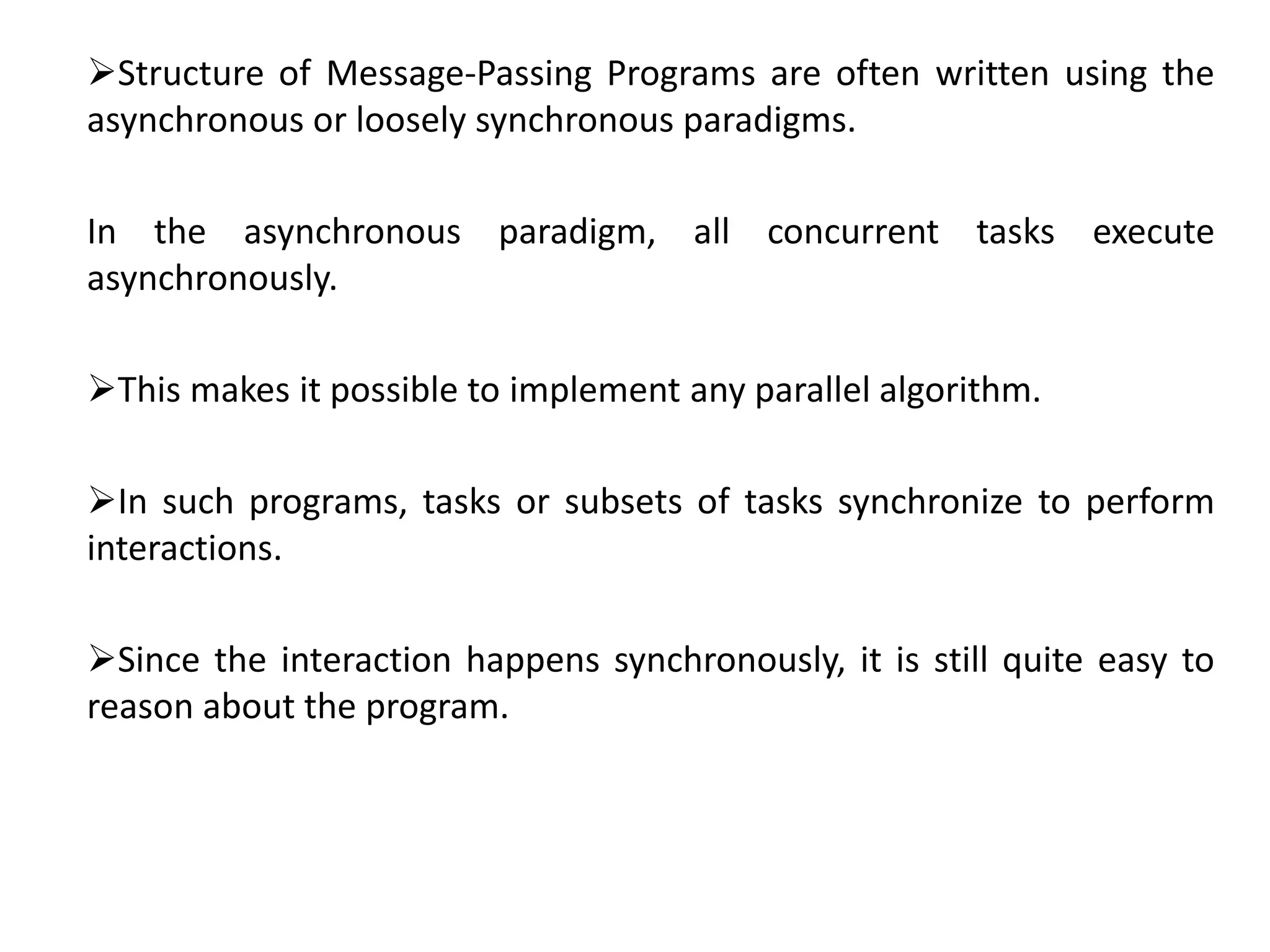

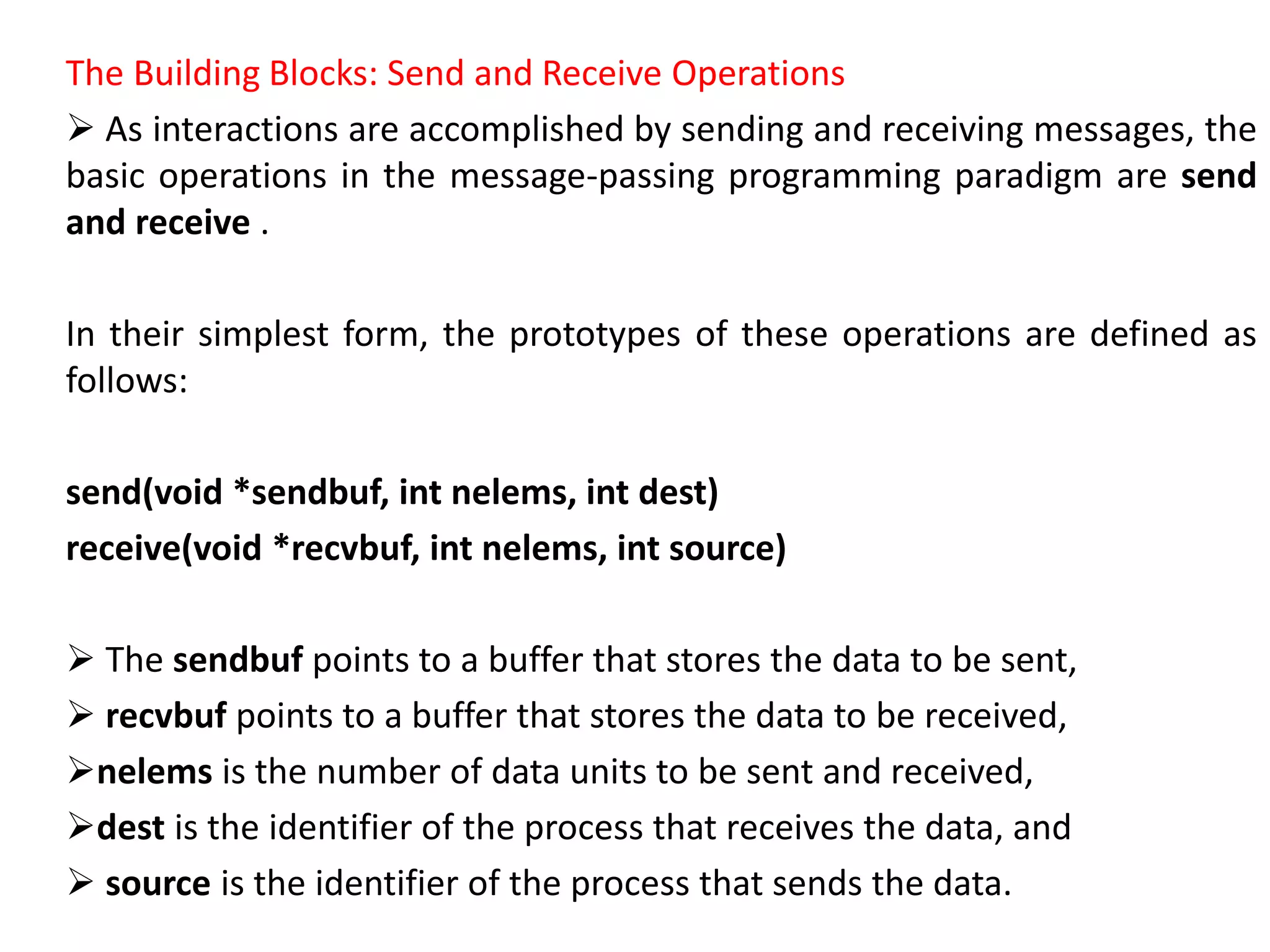

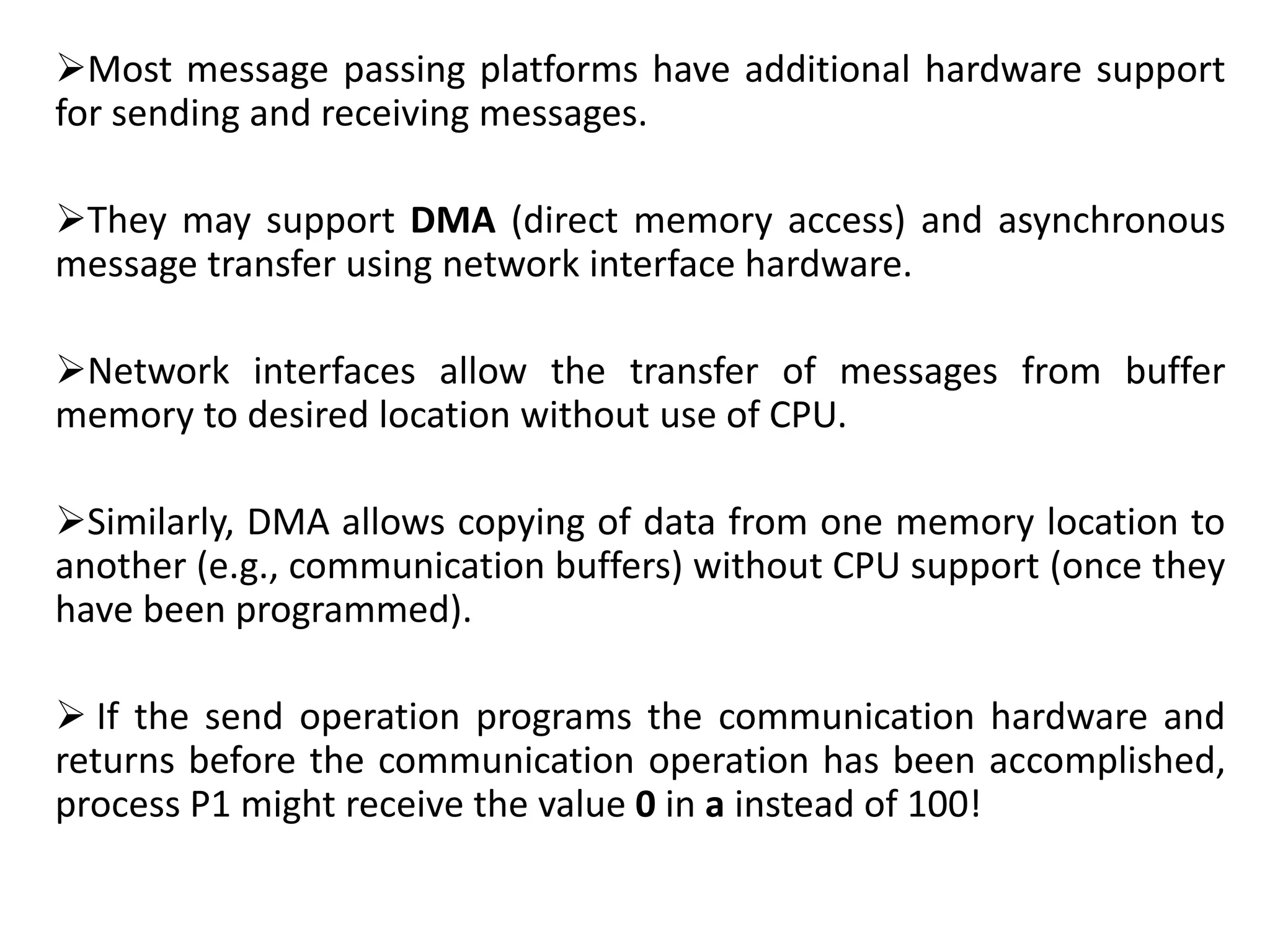
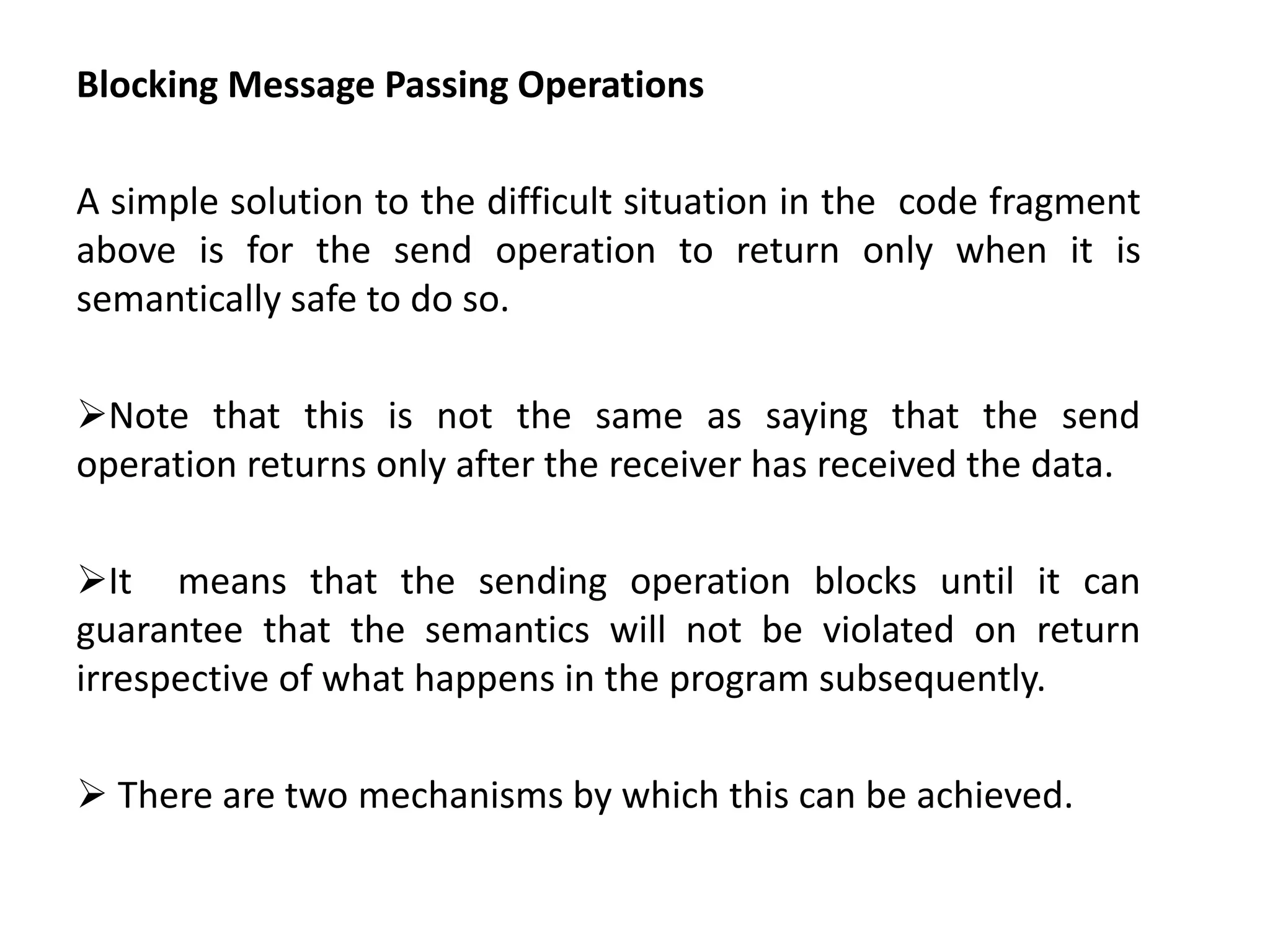
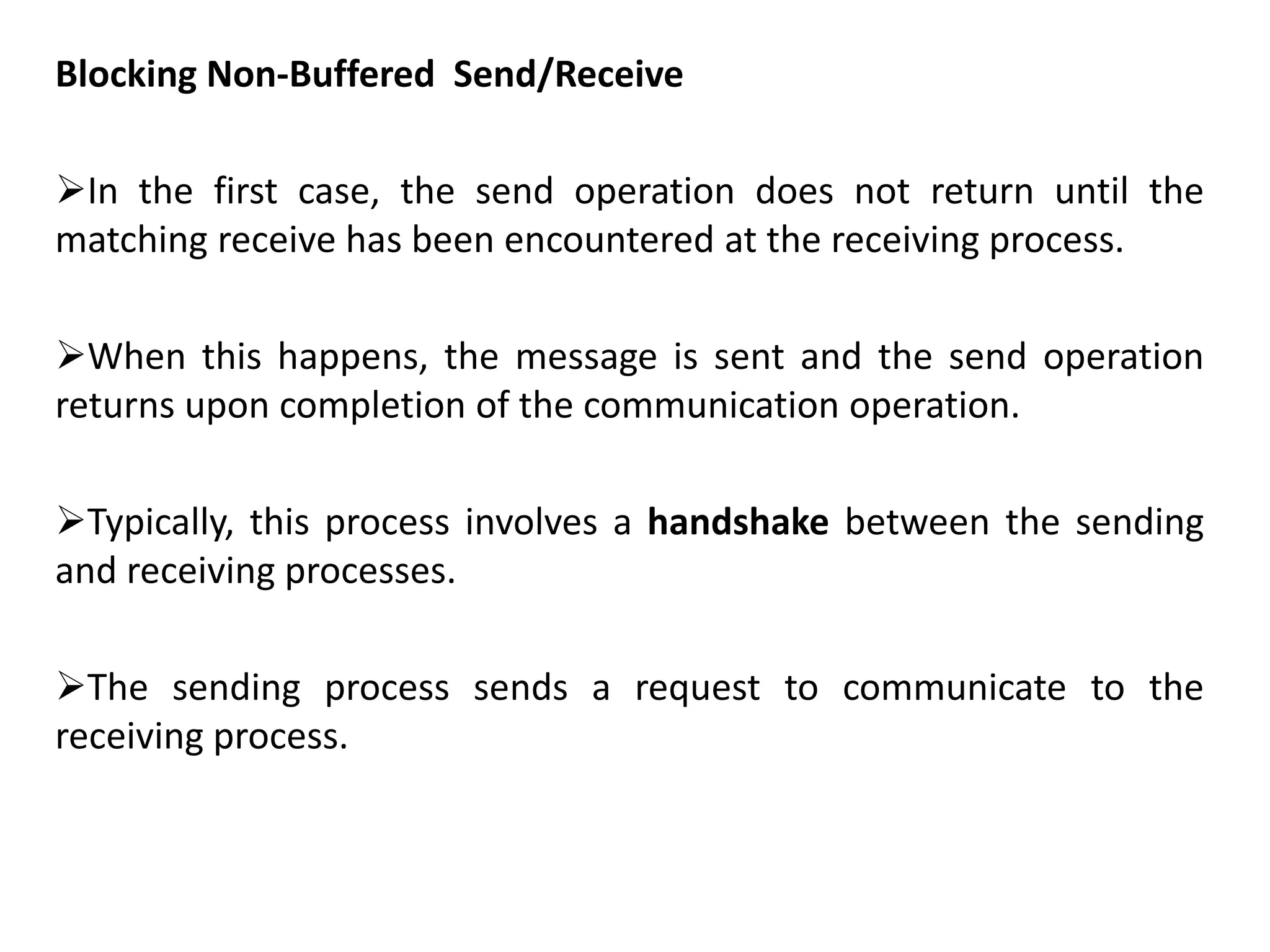

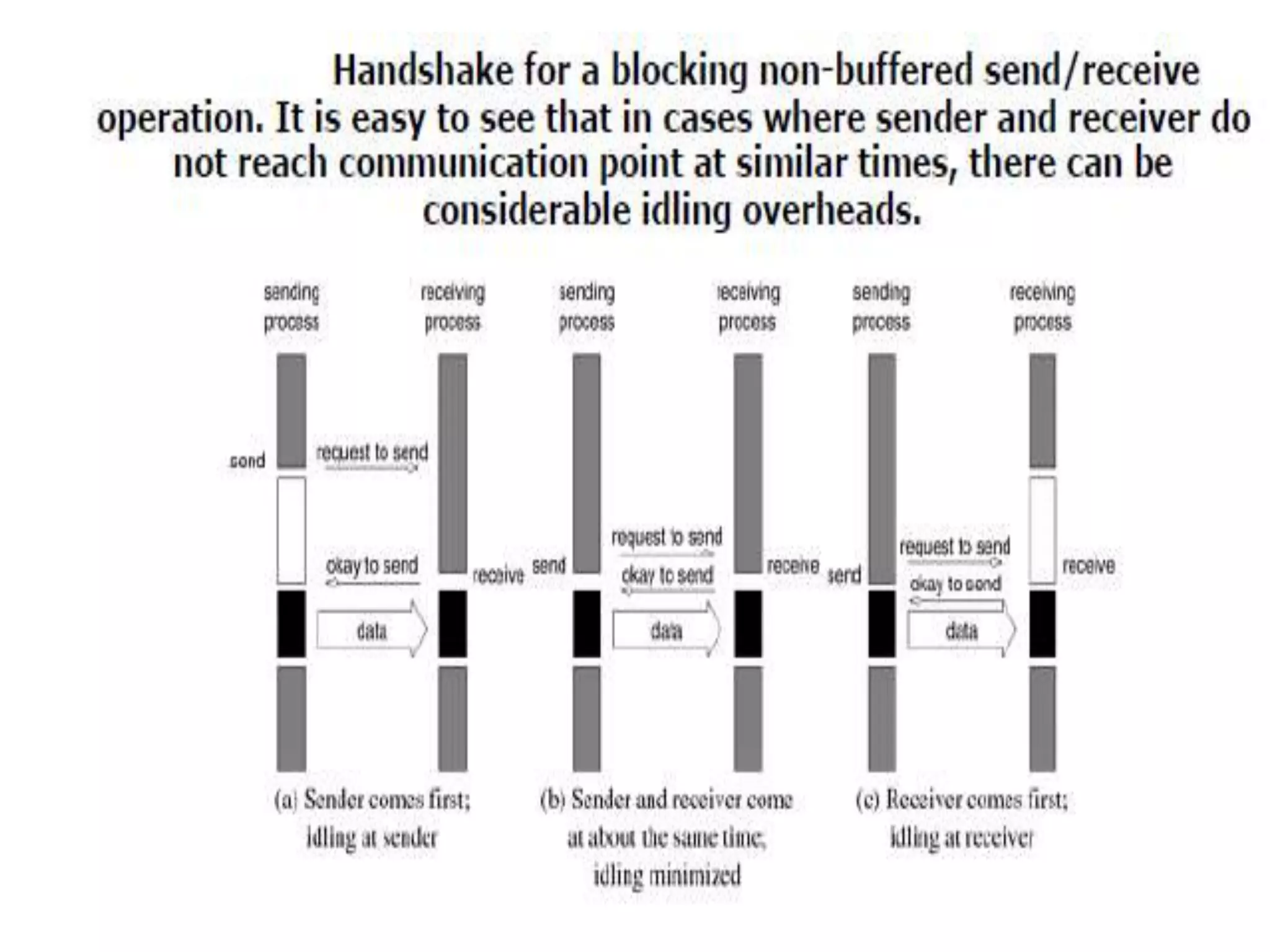
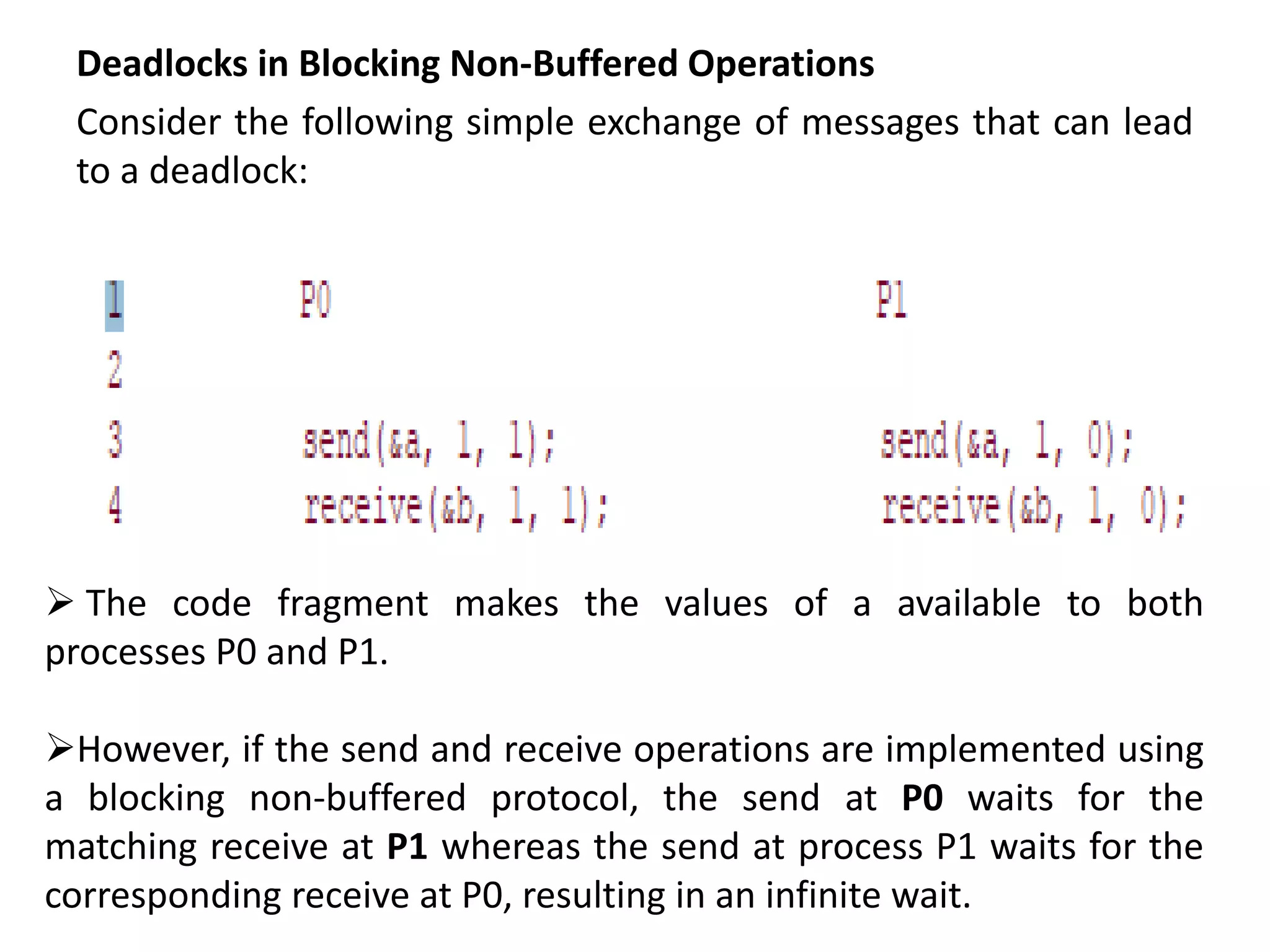
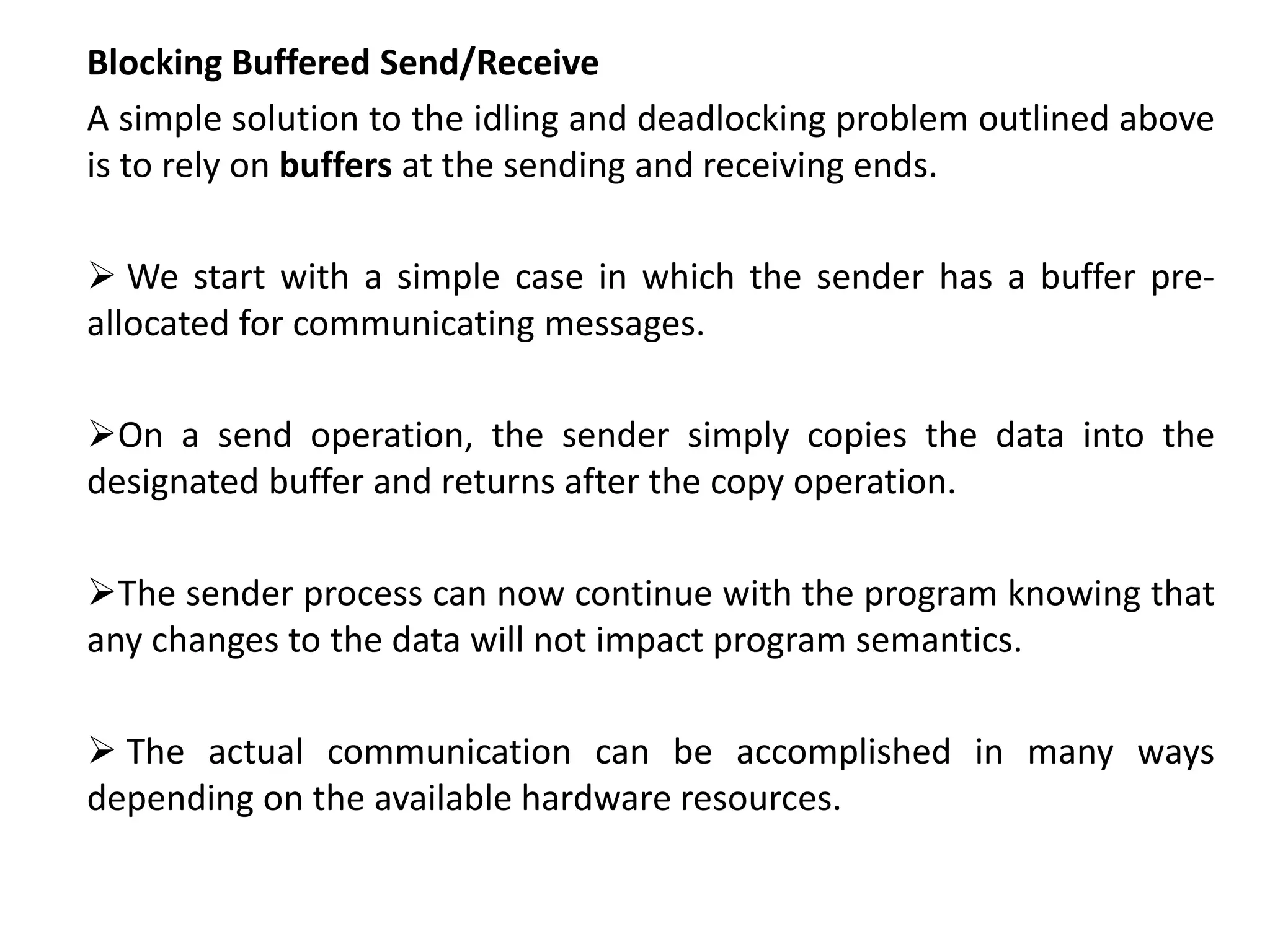

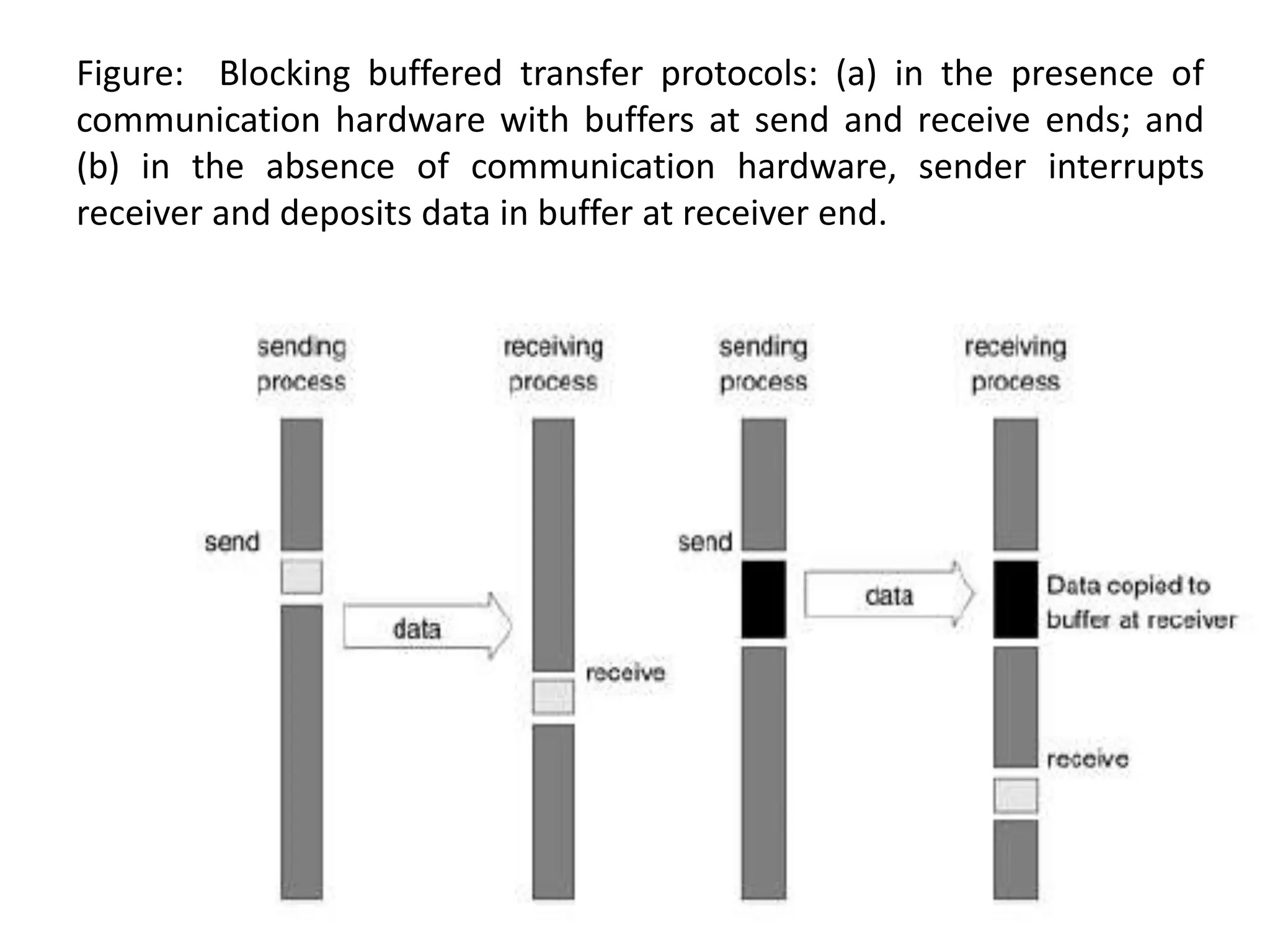

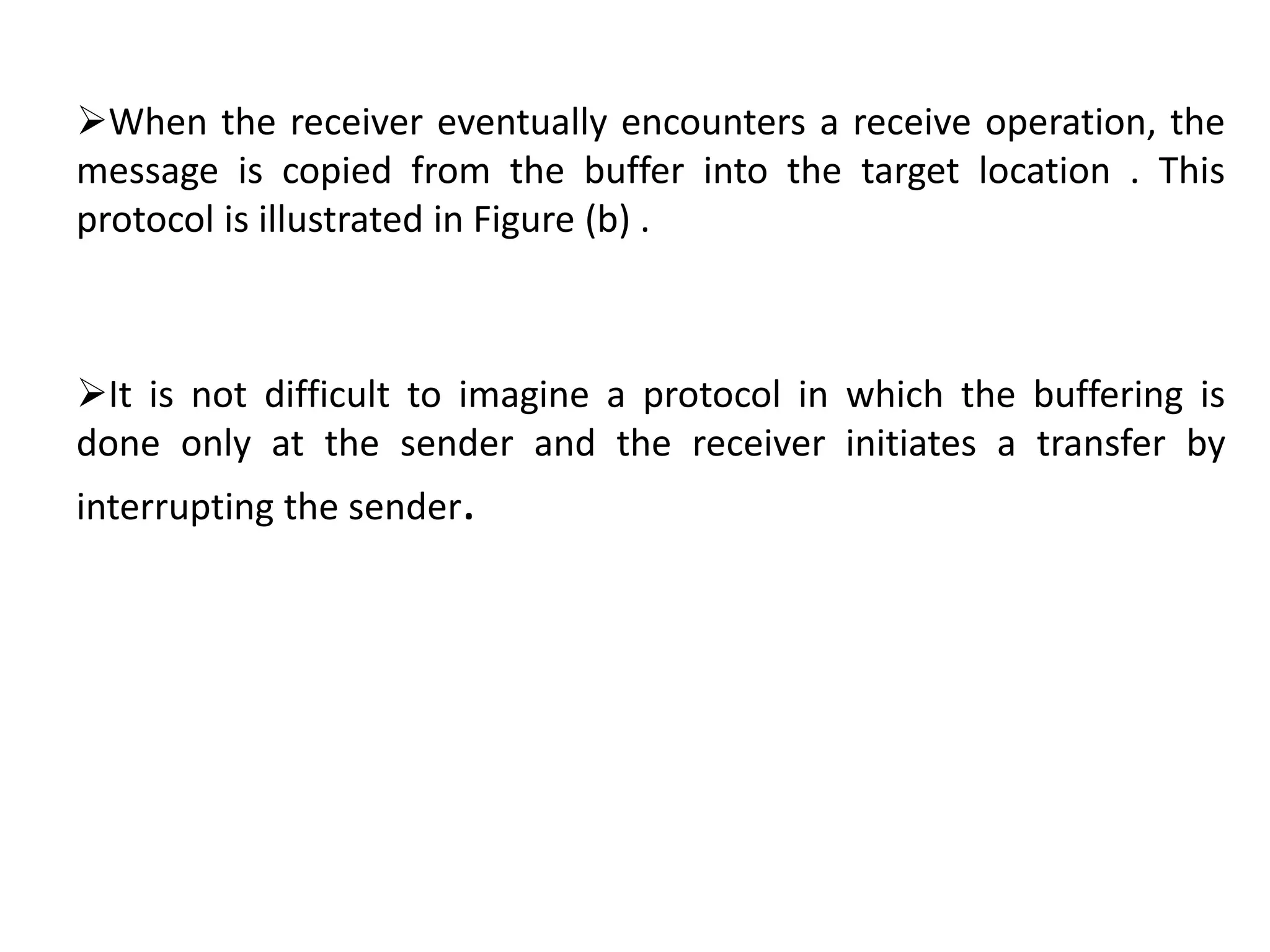
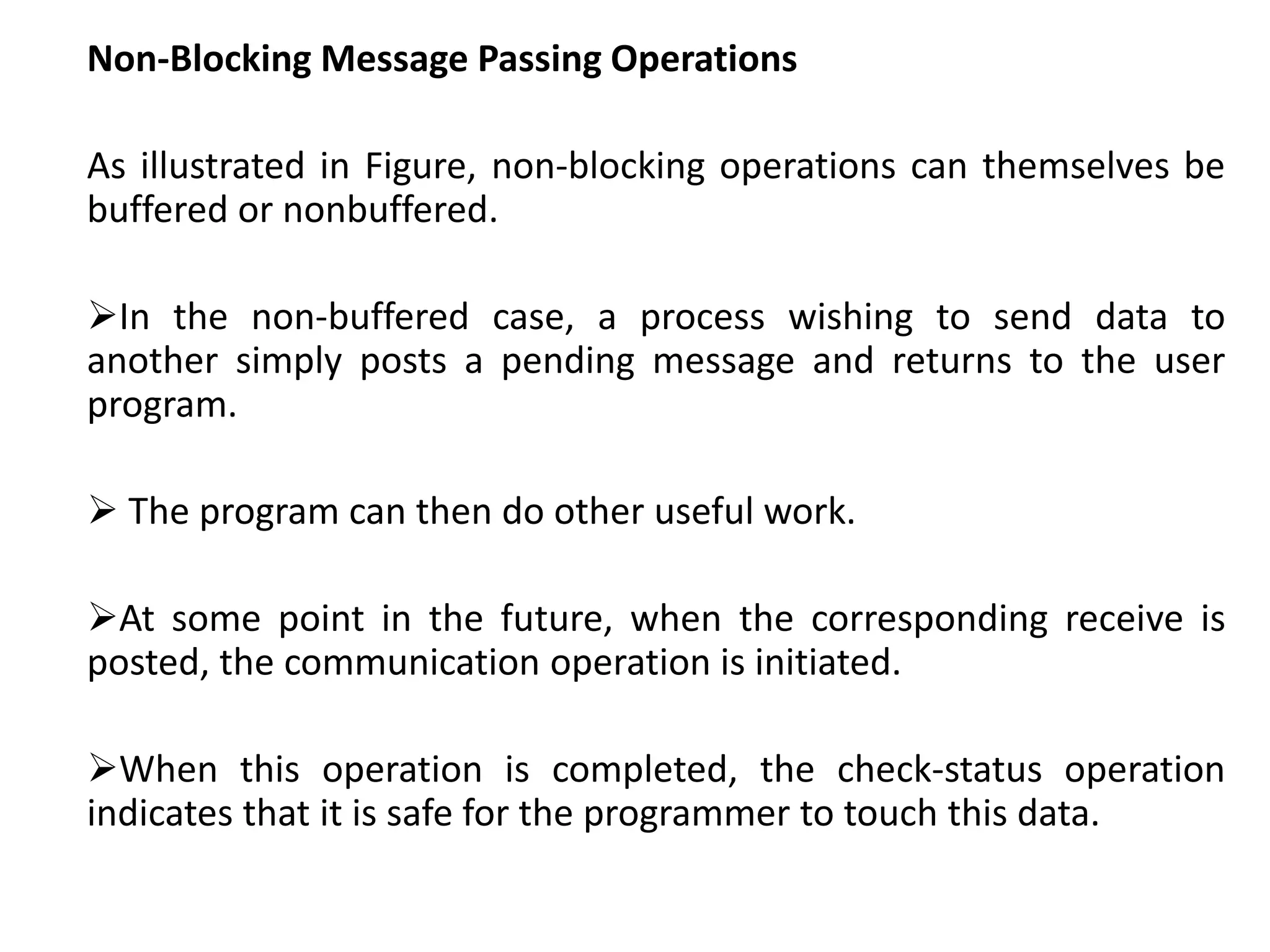
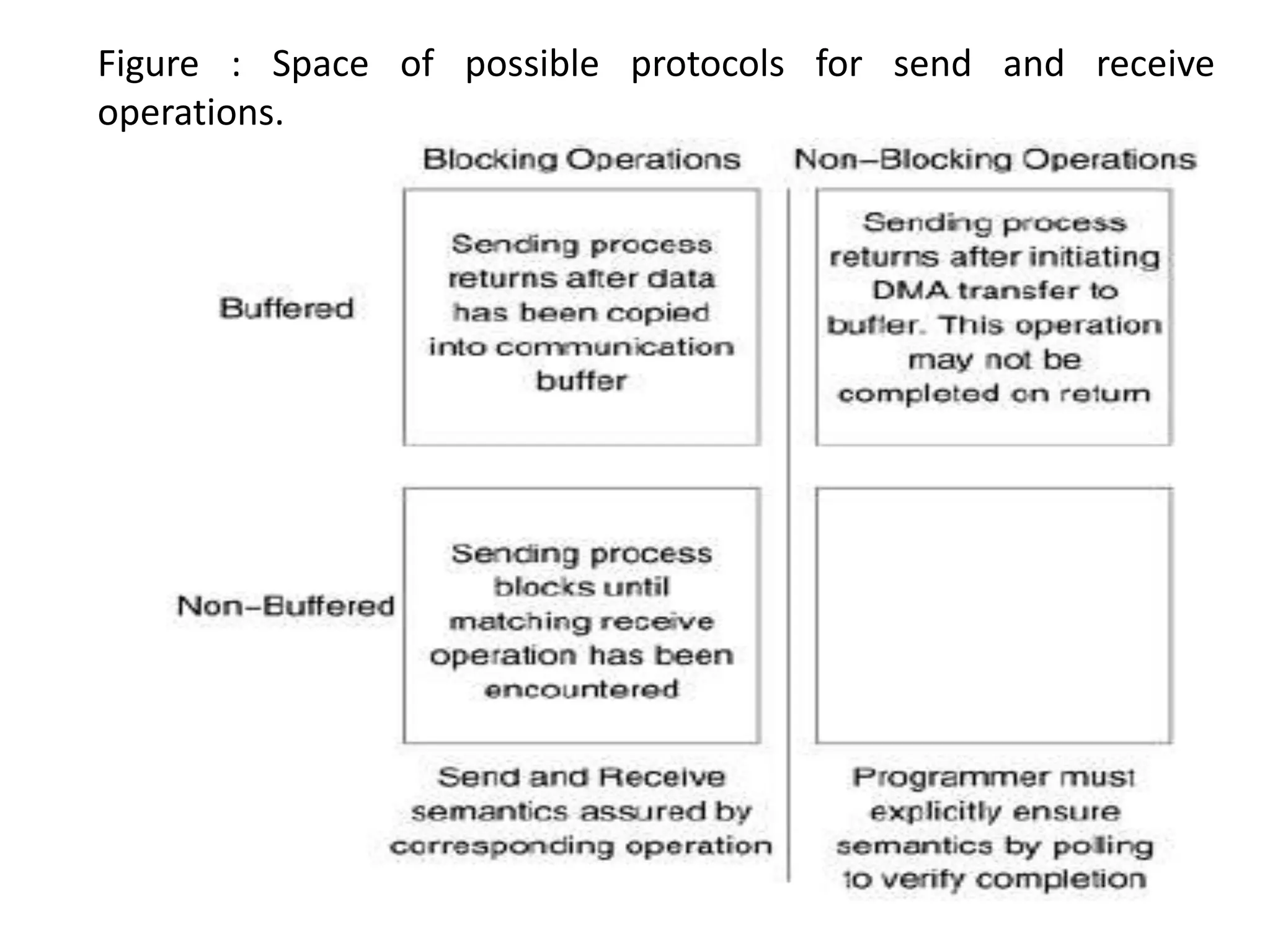
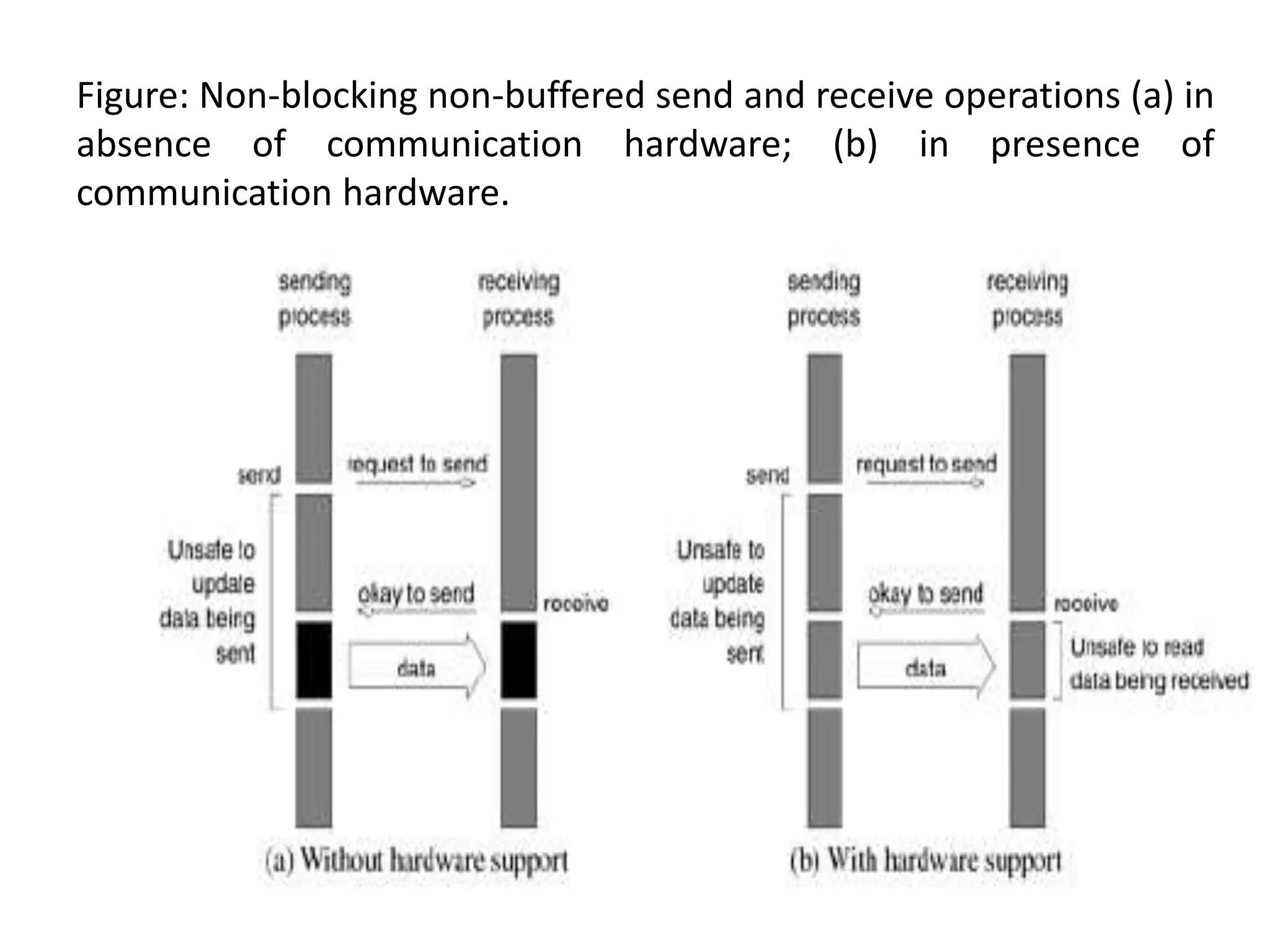
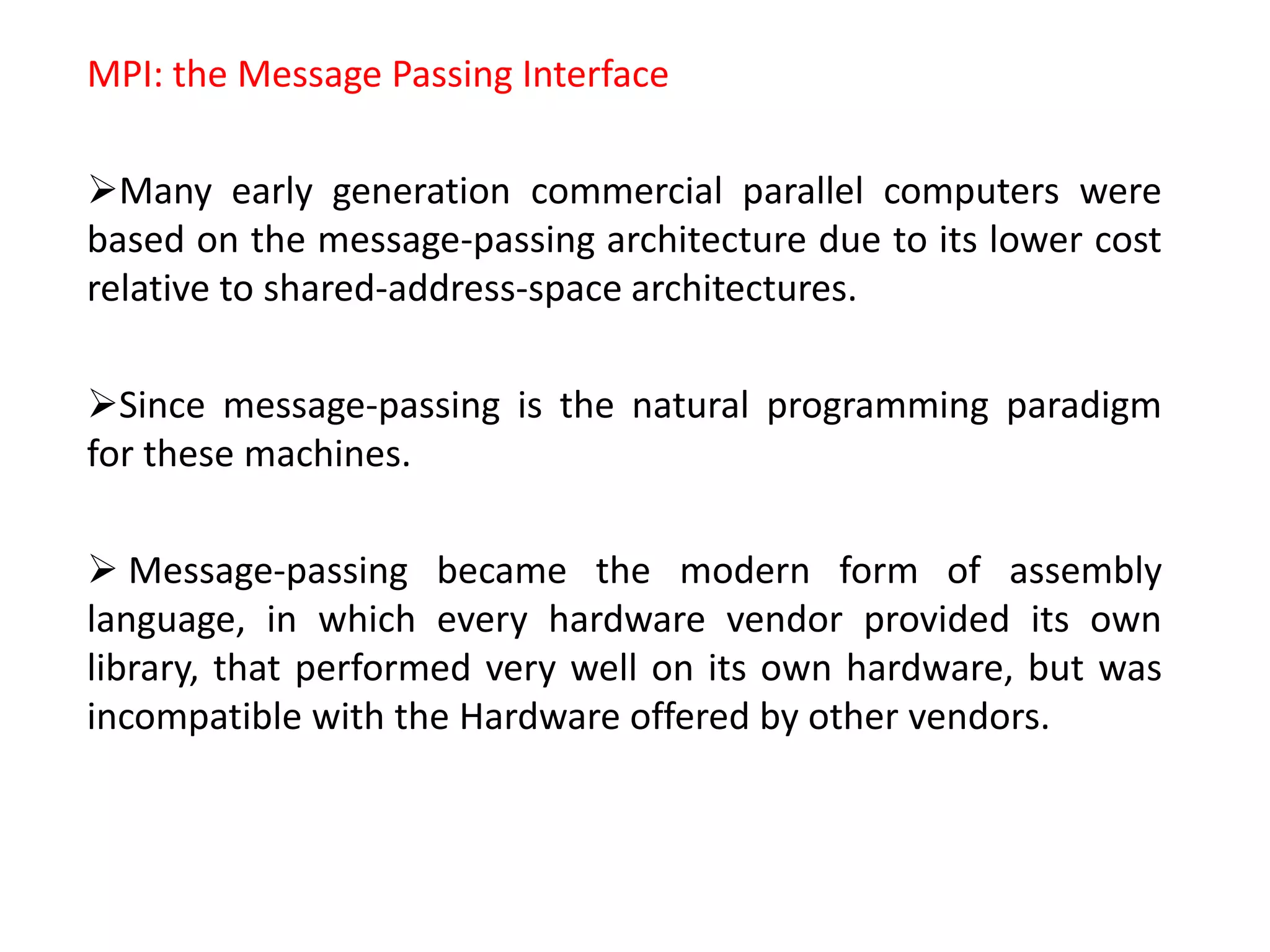
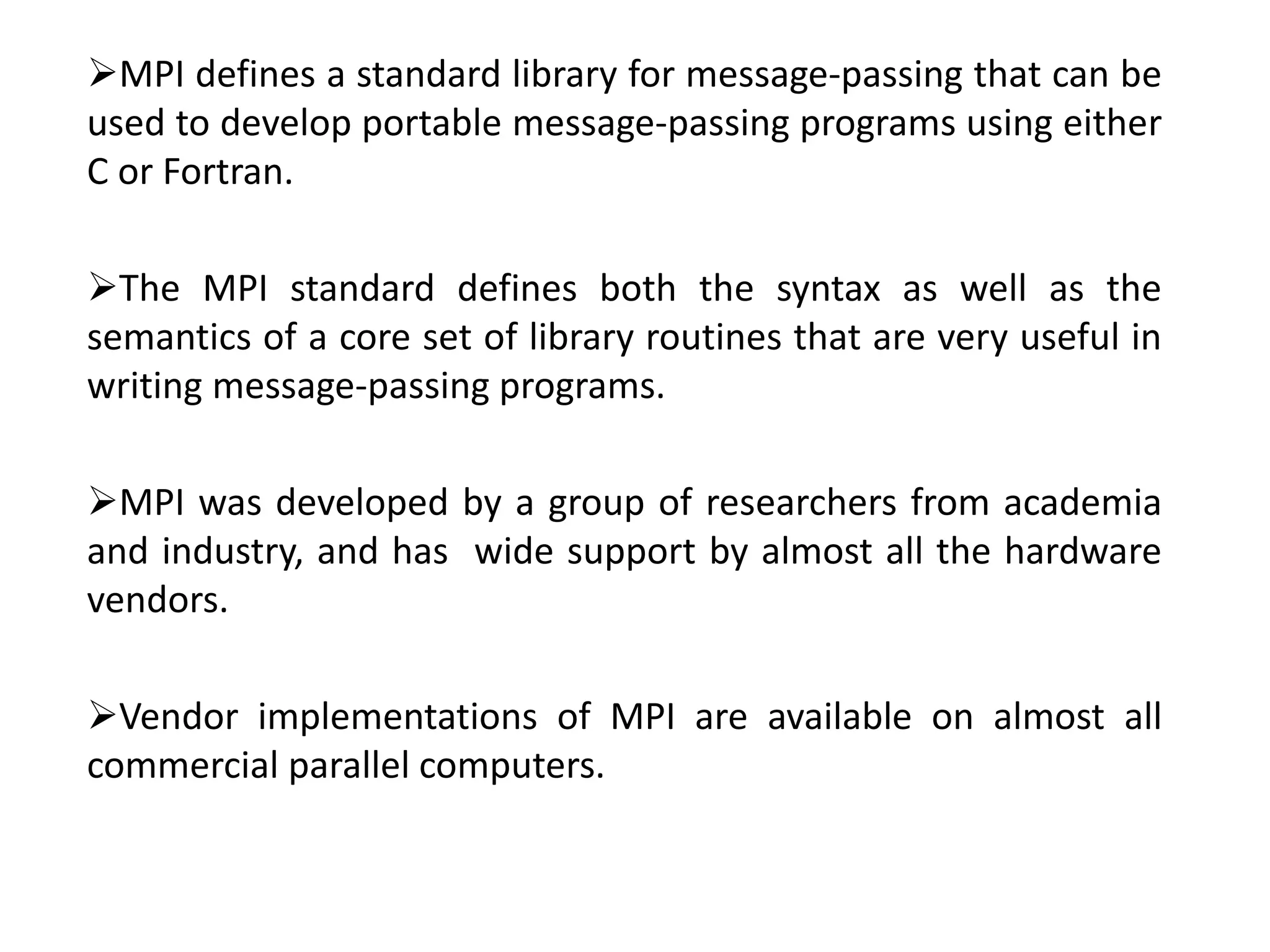

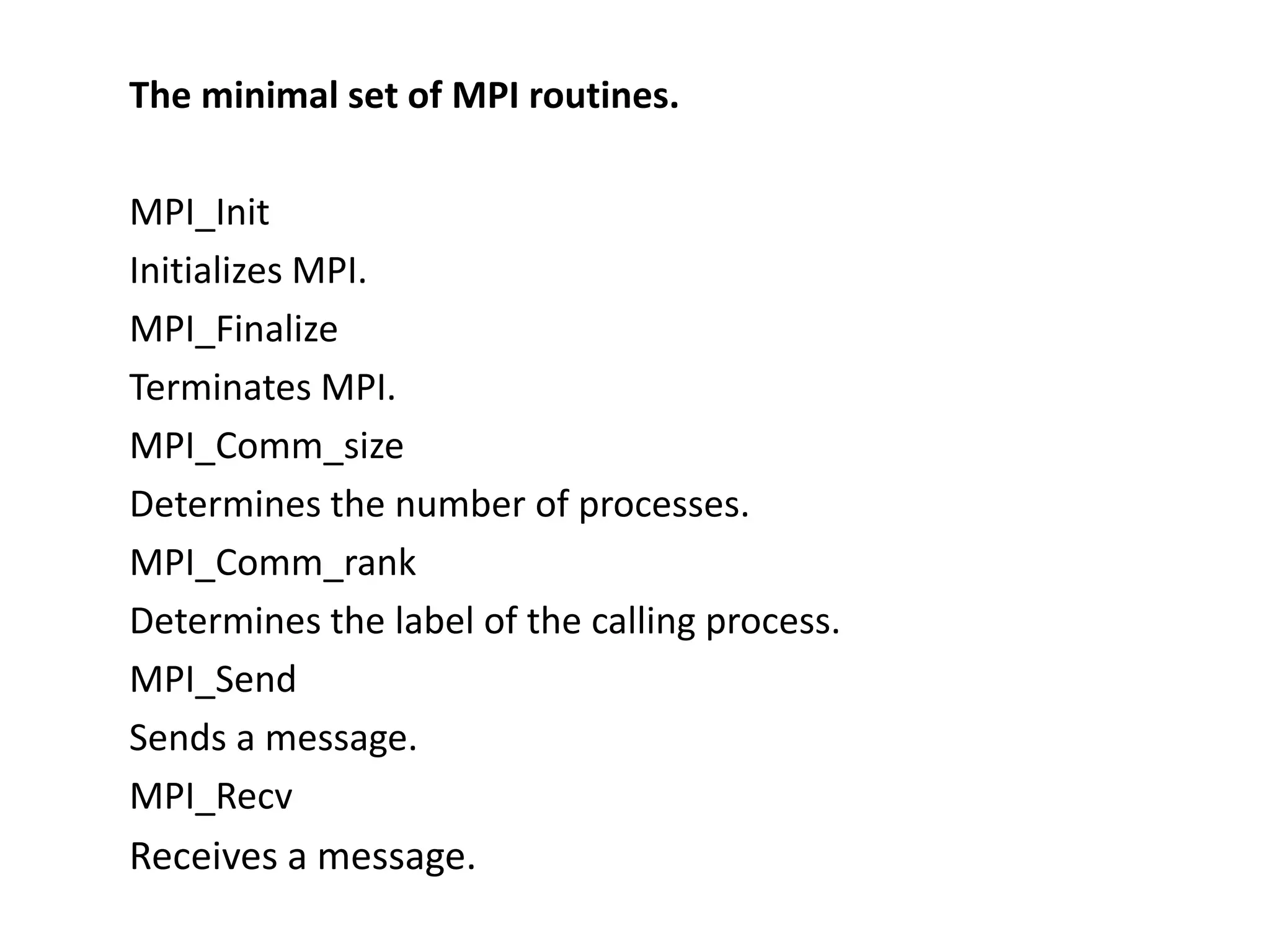

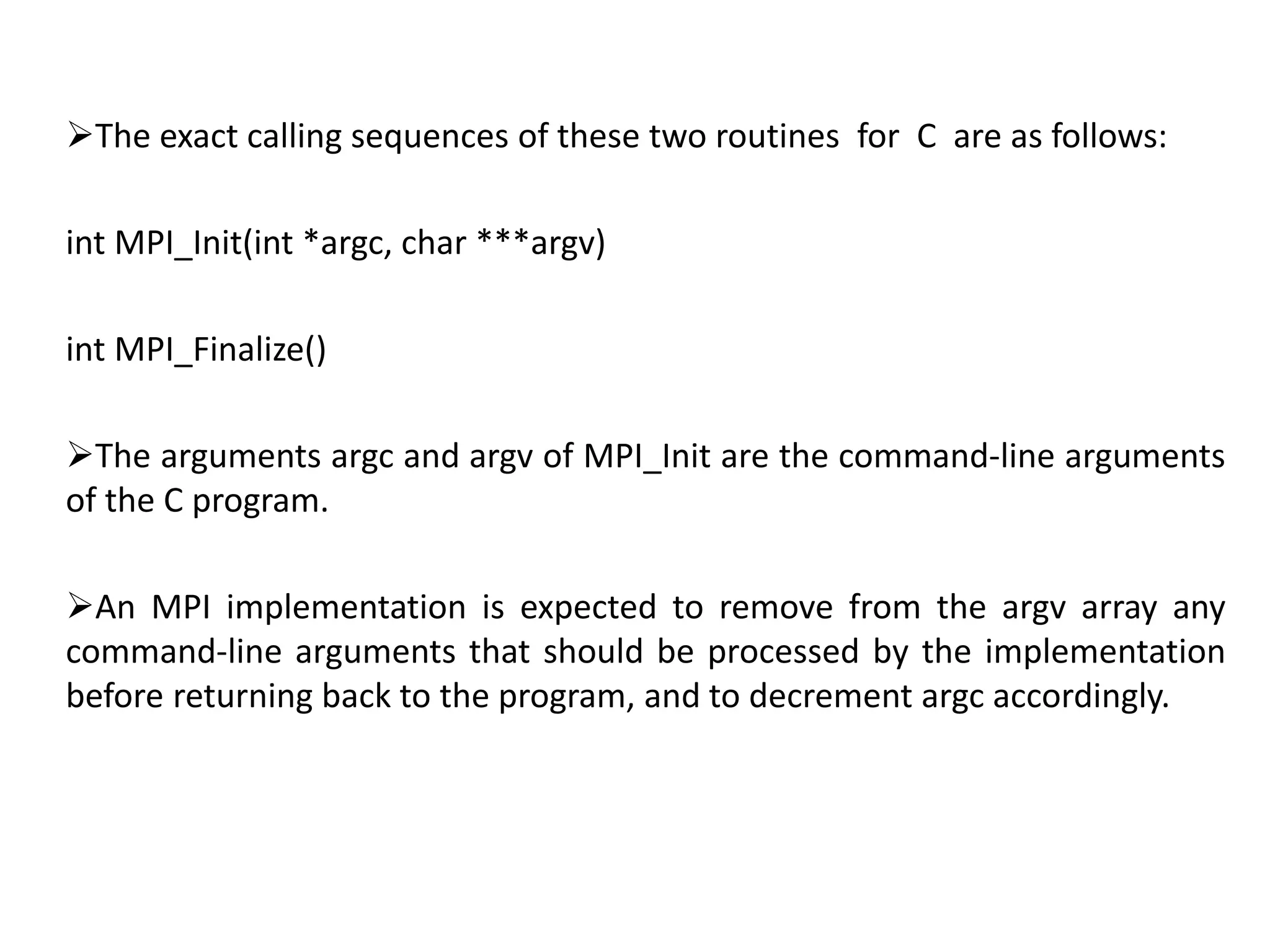

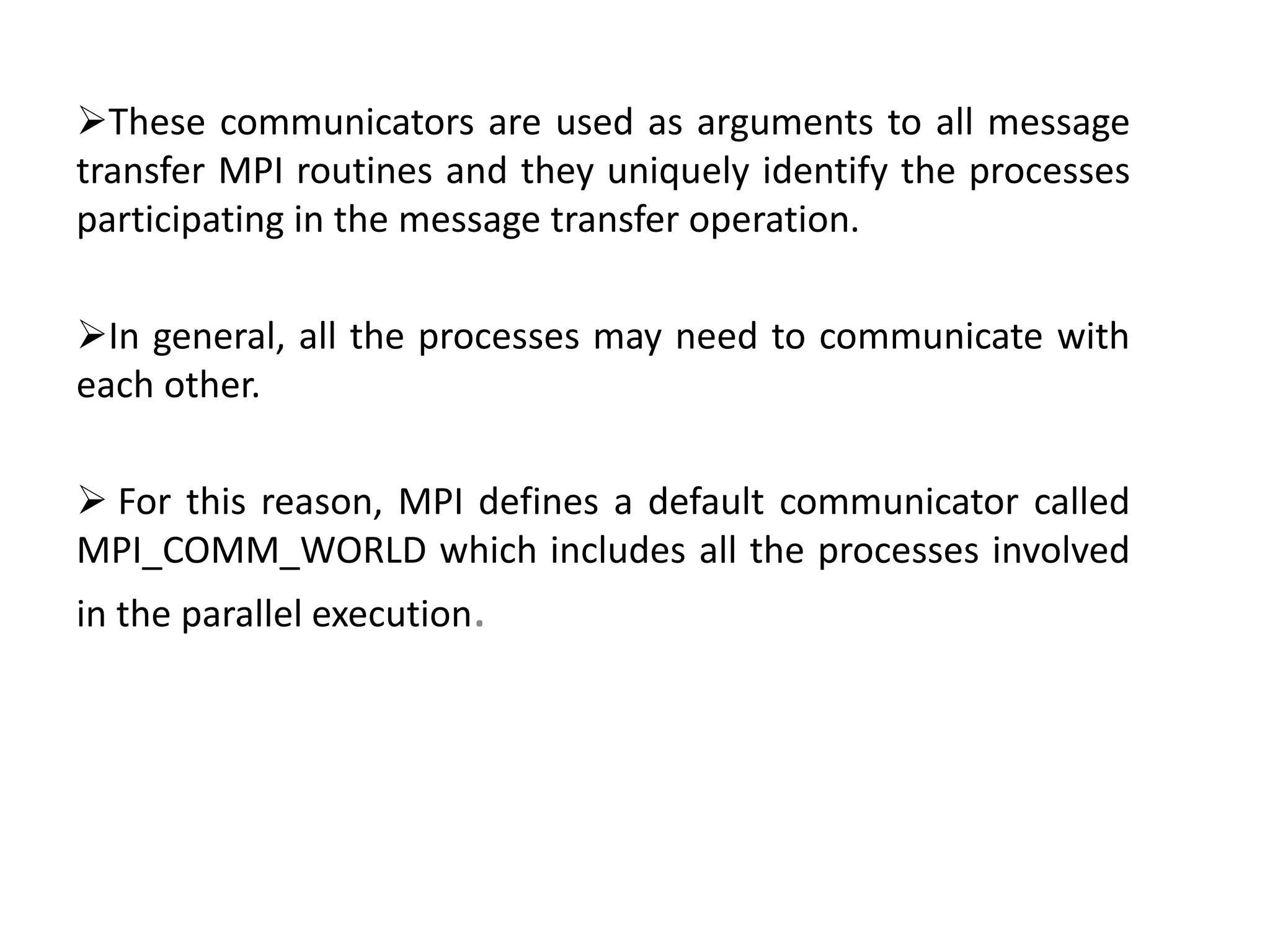
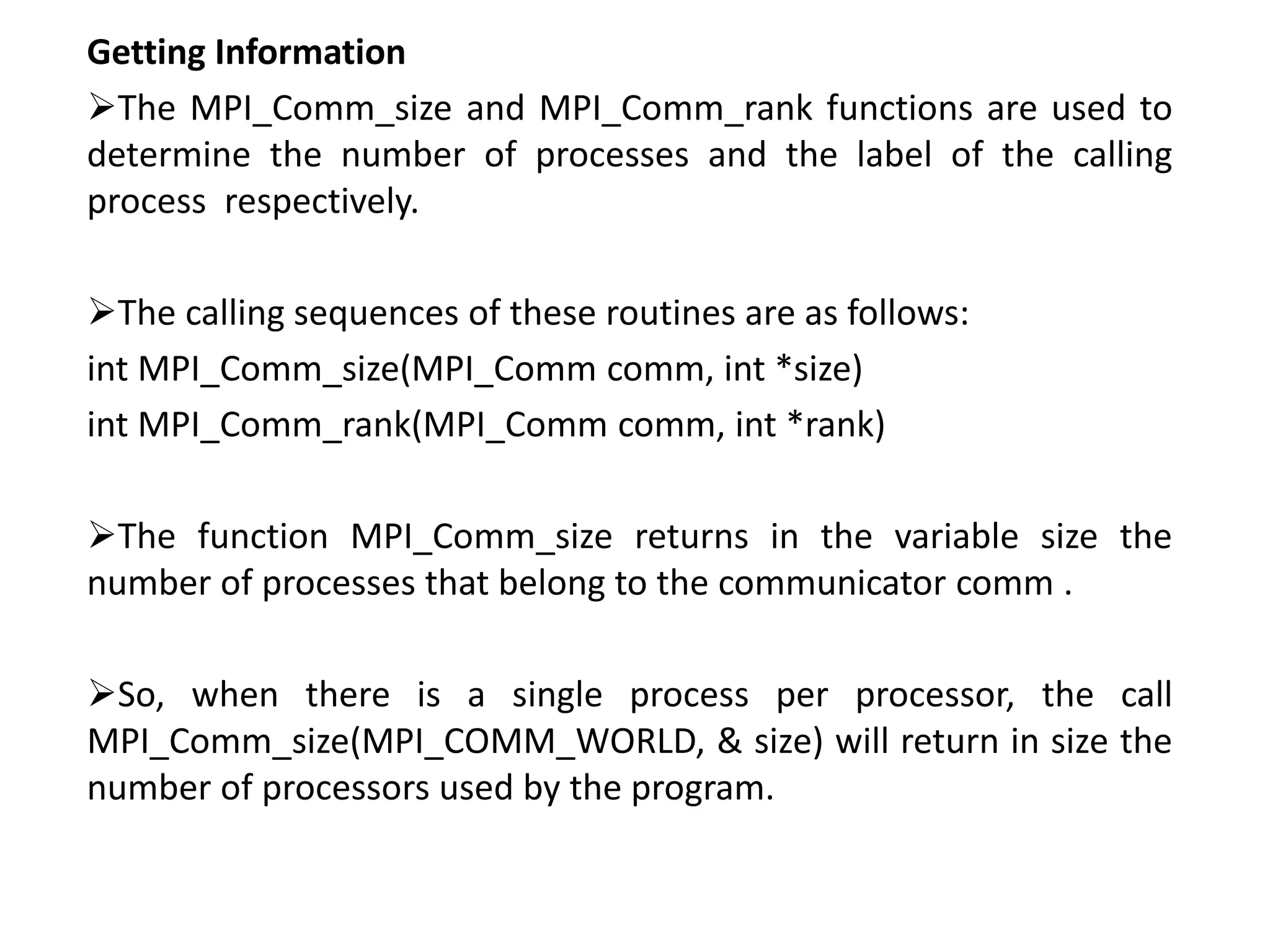

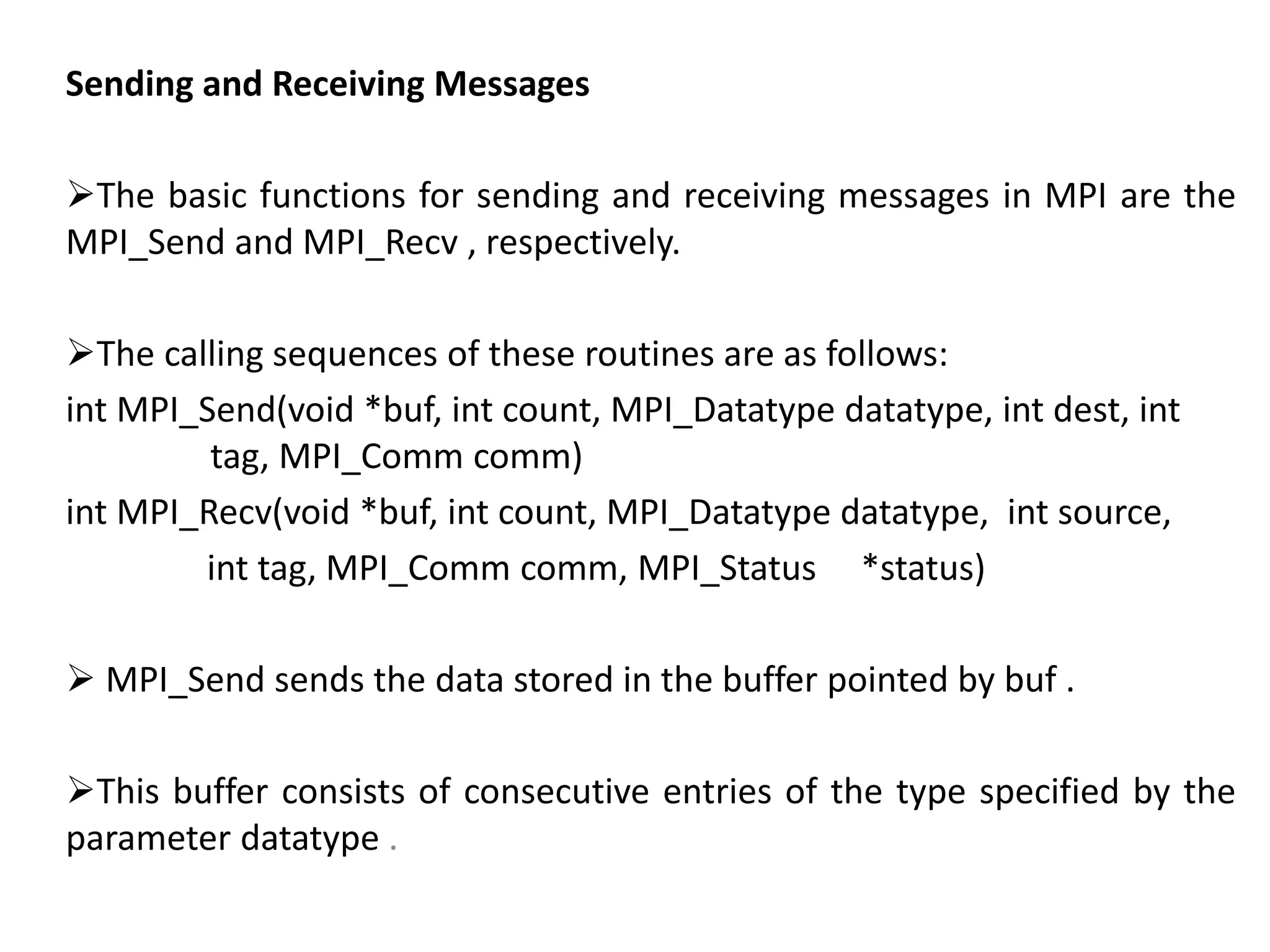
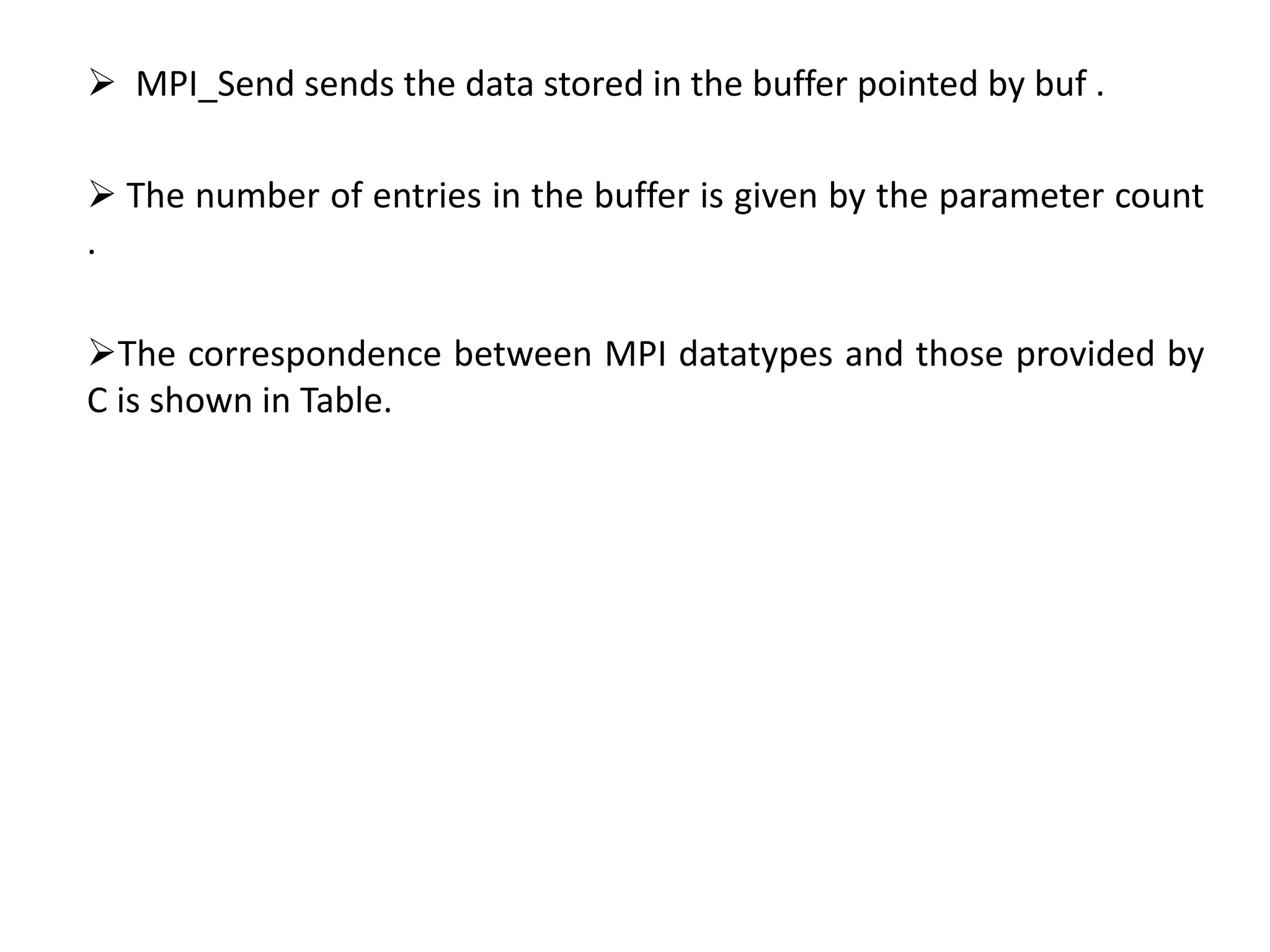
![First sample MPI program
#include <mpi.h>
main(int argc, char *argv[])
{
int npes, myrank;
MPI_Init(&argc, &argv);
MPI_Comm_size(MPI_COMM_WORLD, &npes);
MPI_Comm_rank(MPI_COMM_WORLD, &myrank);
printf("From process %d out of %d, Hello World!n",
myrank, npes);
MPI_Finalize();
}](https://image.slidesharecdn.com/mpi-230816193618-438e41db/75/MPI-pptx-39-2048.jpg)
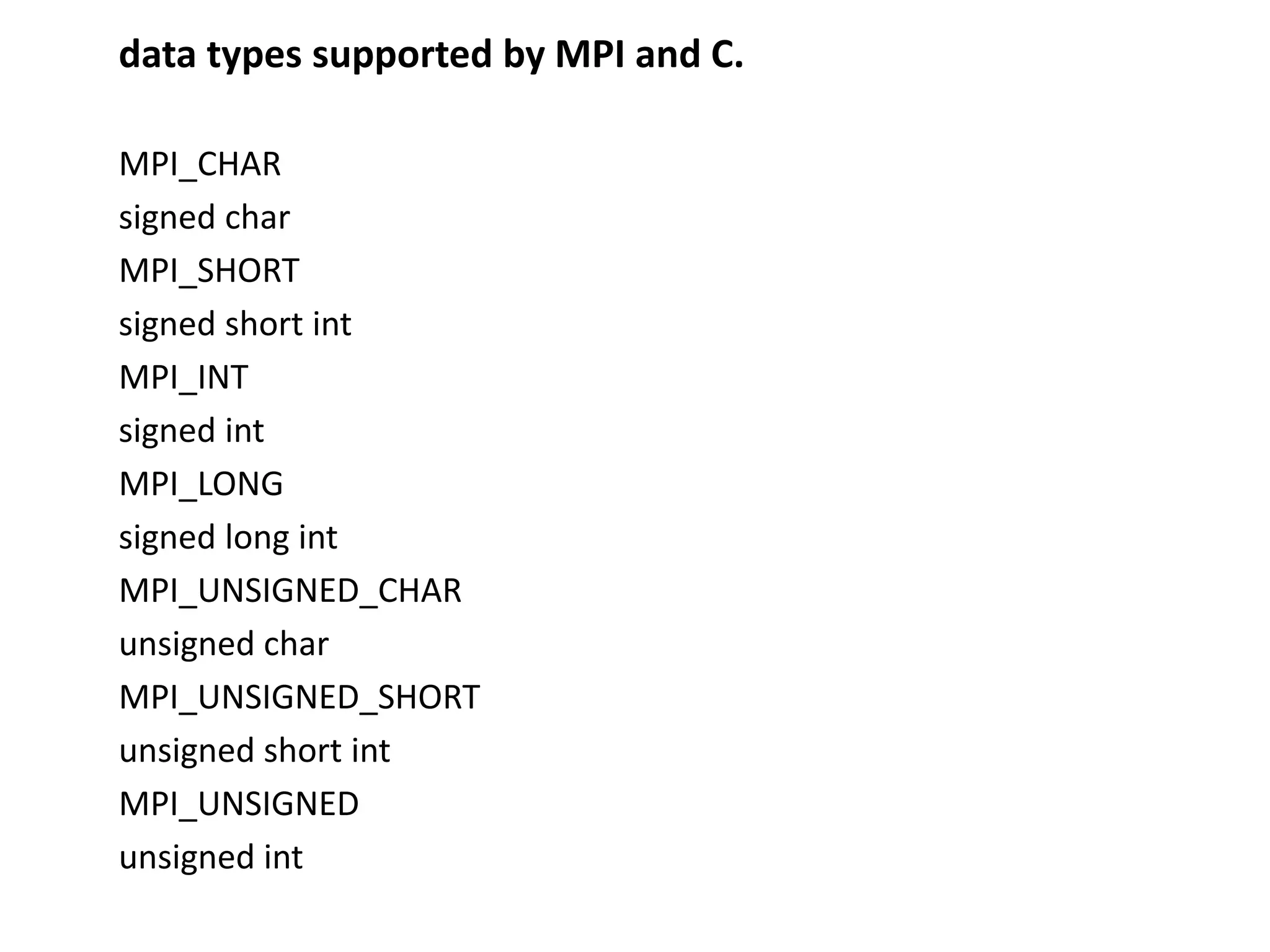


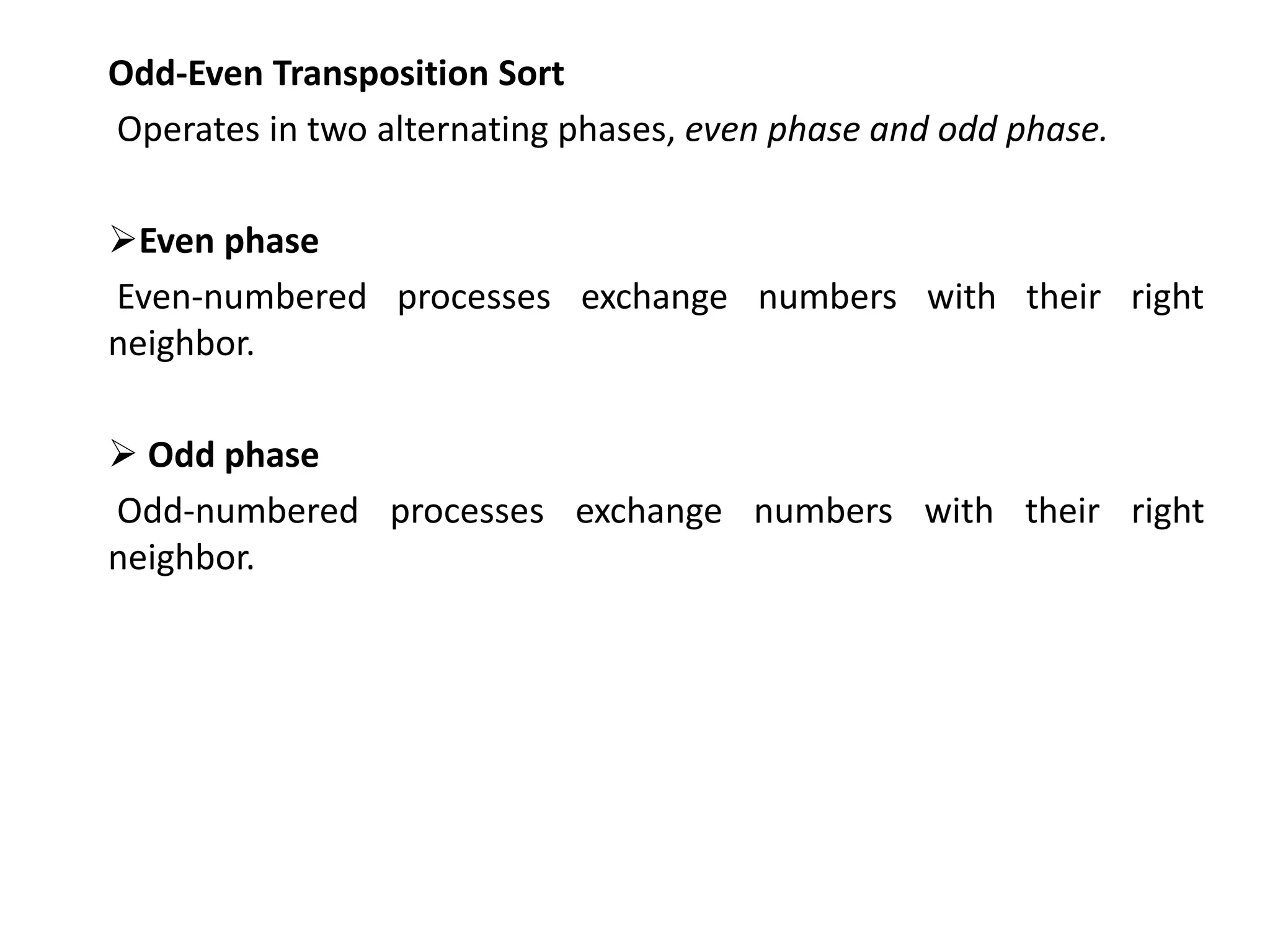

![Program Odd-Even Sorting
1 #include <stdlib.h>
2 #include <mpi.h> /* Include MPI's header file */
3
4 main(int argc, char *argv[])
5 {
6 int n; /* The total number of elements to be sorted */
7 int npes; /* The total number of processes */
8 int myrank; /* The rank of the calling process */
9 int nlocal; /* The local number of elements, and the array
that stores them */
10 int *elmnts; /* The array that stores the local elements */
11 int *relmnts; /* The array that stores the received
elements */](https://image.slidesharecdn.com/mpi-230816193618-438e41db/75/MPI-pptx-45-2048.jpg)
![12 int oddrank; /* The rank of the process during odd-phase
communication */
13 int evenrank; /* The rank of the process during even-phase
communication */
14 int *wspace; /* Working space during the compare-split operation
*/
15 int i;
16 MPI_Status status;
17
18 /* Initialize MPI and get system information */
19 MPI_Init(&argc, &argv);
20 MPI_Comm_size(MPI_COMM_WORLD, &npes);
21 MPI_Comm_rank(MPI_COMM_WORLD, &myrank);
22
23 n = atoi(argv[1]);
24 nlocal = n/npes; /* Compute the number of elements to be stored
locally. */
25](https://image.slidesharecdn.com/mpi-230816193618-438e41db/75/MPI-pptx-46-2048.jpg)
![26 /* Allocate memory for the various arrays */
27 elmnts = (int *)malloc(nlocal*sizeof(int));
28 relmnts = (int *)malloc(nlocal*sizeof(int));
29 wspace = (int *)malloc(nlocal*sizeof(int));
30
31 /* Fill-in the elmnts array with random elements */
32 srandom(myrank);
33 for (i=0; i<nlocal; i++)
34 elmnts[i] = random();
35
36 /* Sort the local elements using the built-in quicksort
routine */
37 qsort(elmnts, nlocal, sizeof(int), IncOrder);
38
39 /* Determine the rank of the processors that myrank
needs to communicate during the */](https://image.slidesharecdn.com/mpi-230816193618-438e41db/75/MPI-pptx-47-2048.jpg)
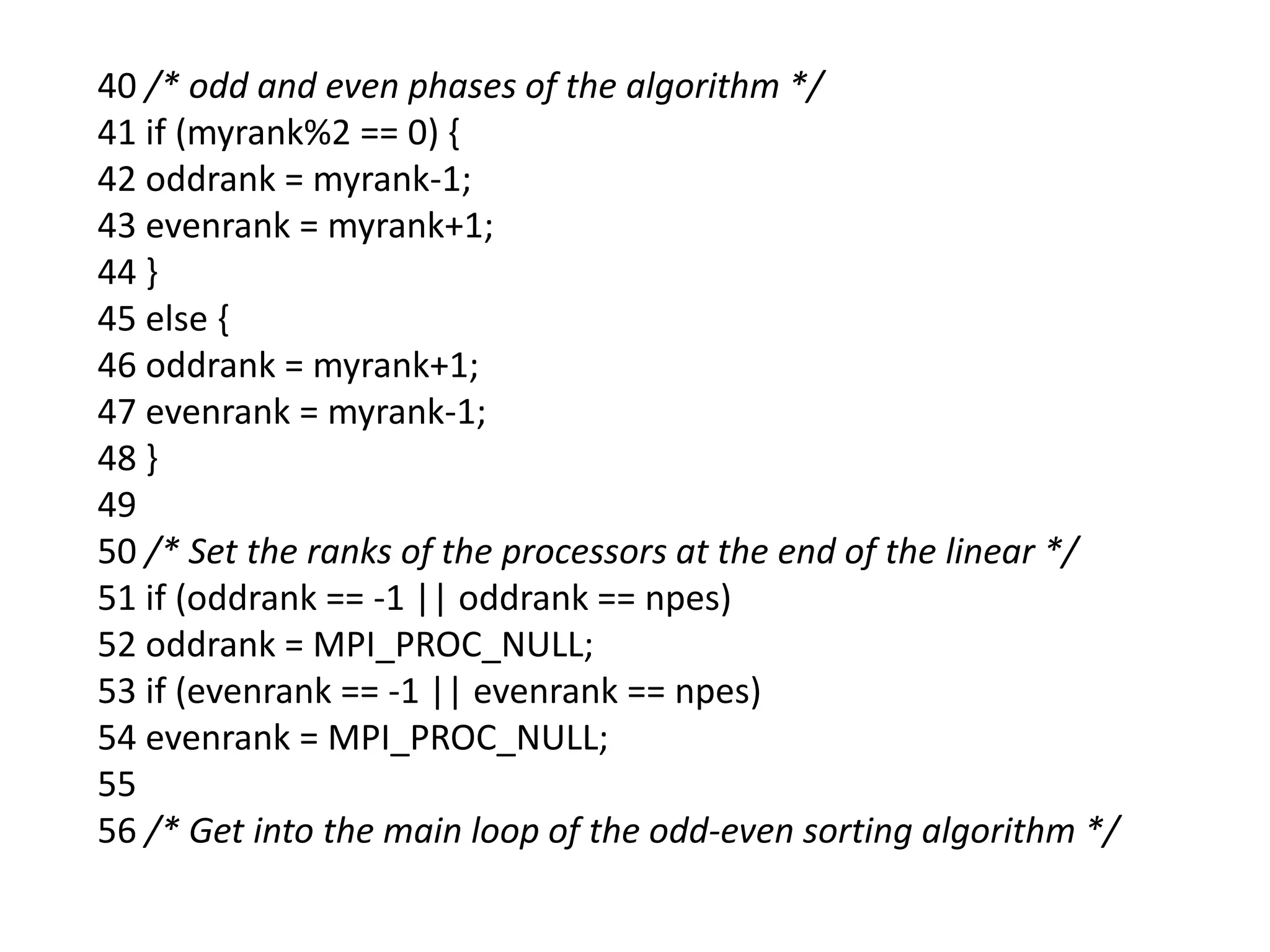
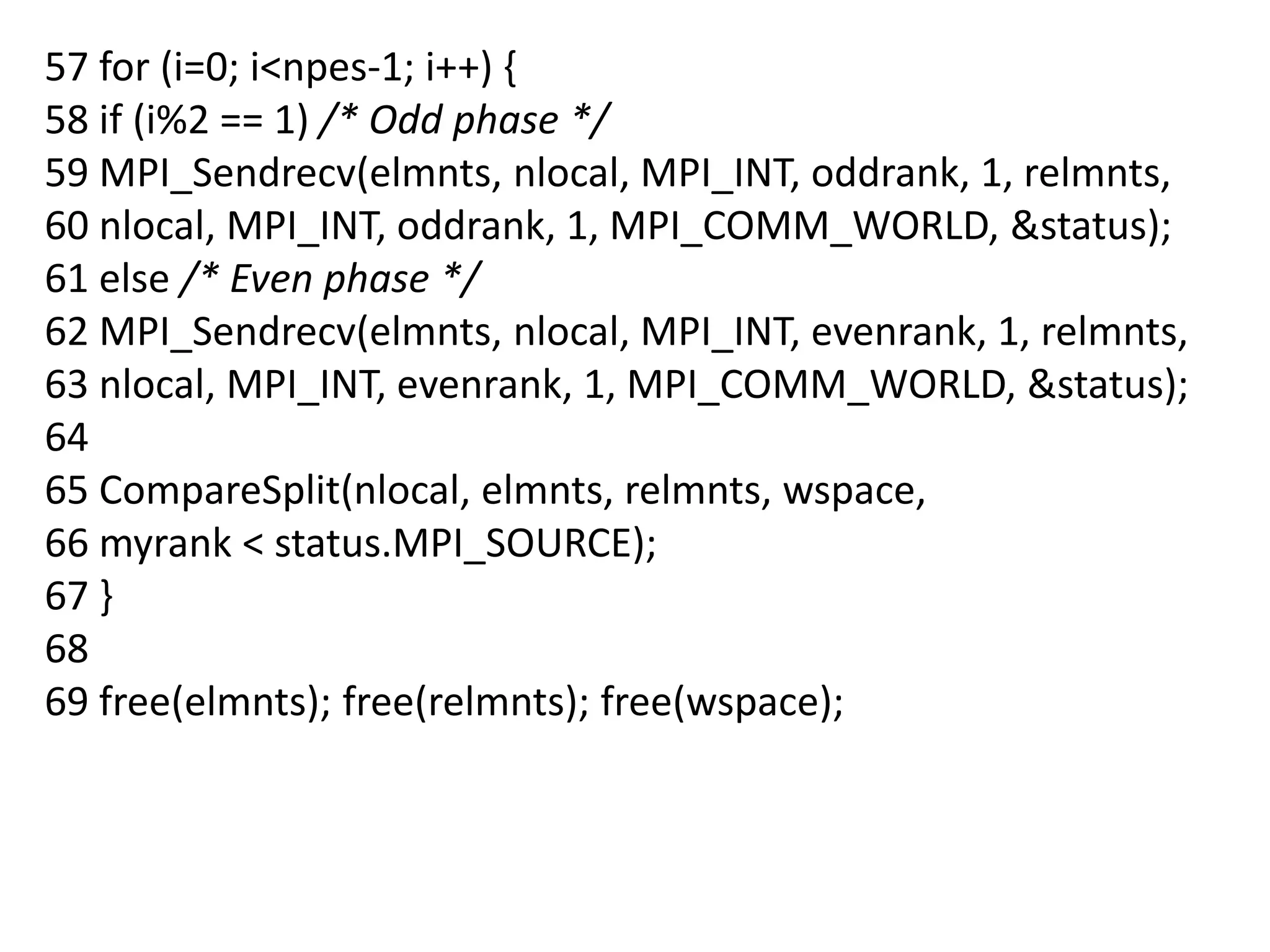
![70 MPI_Finalize();
71 }
72
73 /* This is the CompareSplit function */
74 CompareSplit(int nlocal, int *elmnts, int *relmnts, int *wspace,
75 int keepsmall)
76 {
77 int i, j, k;
78
79 for (i=0; i<nlocal; i++)
80 wspace[i] = elmnts[i]; /* Copy the elmnts array into the wspace
array */
81
82 if (keepsmall) { /* Keep the nlocal smaller elements */
83 for (i=j=k=0; k<nlocal; k++) {
84 if (j == nlocal || (i < nlocal && wspace[i] < relmnts[j]))
85 elmnts[k] = wspace[i++];
86 else
87 elmnts[k] = relmnts[j++];](https://image.slidesharecdn.com/mpi-230816193618-438e41db/75/MPI-pptx-50-2048.jpg)
![88 }
89 }
90 else { /* Keep the nlocal larger elements */
91 for (i=k=nlocal-1, j=nlocal-1; k>=0; k--) {
92 if (j == 0 || (i >= 0 && wspace[i] >= relmnts[j]))
93 elmnts[k] = wspace[i--];
94 else
95 elmnts[k] = relmnts[j--];
96 }
97 }
98 }
99
100 /* The IncOrder function that is called by qsort is defined as
follows */
101 int IncOrder(const void *e1, const void *e2)
102 {
103 return (*((int *)e1) - *((int *)e2));
104 }](https://image.slidesharecdn.com/mpi-230816193618-438e41db/75/MPI-pptx-51-2048.jpg)
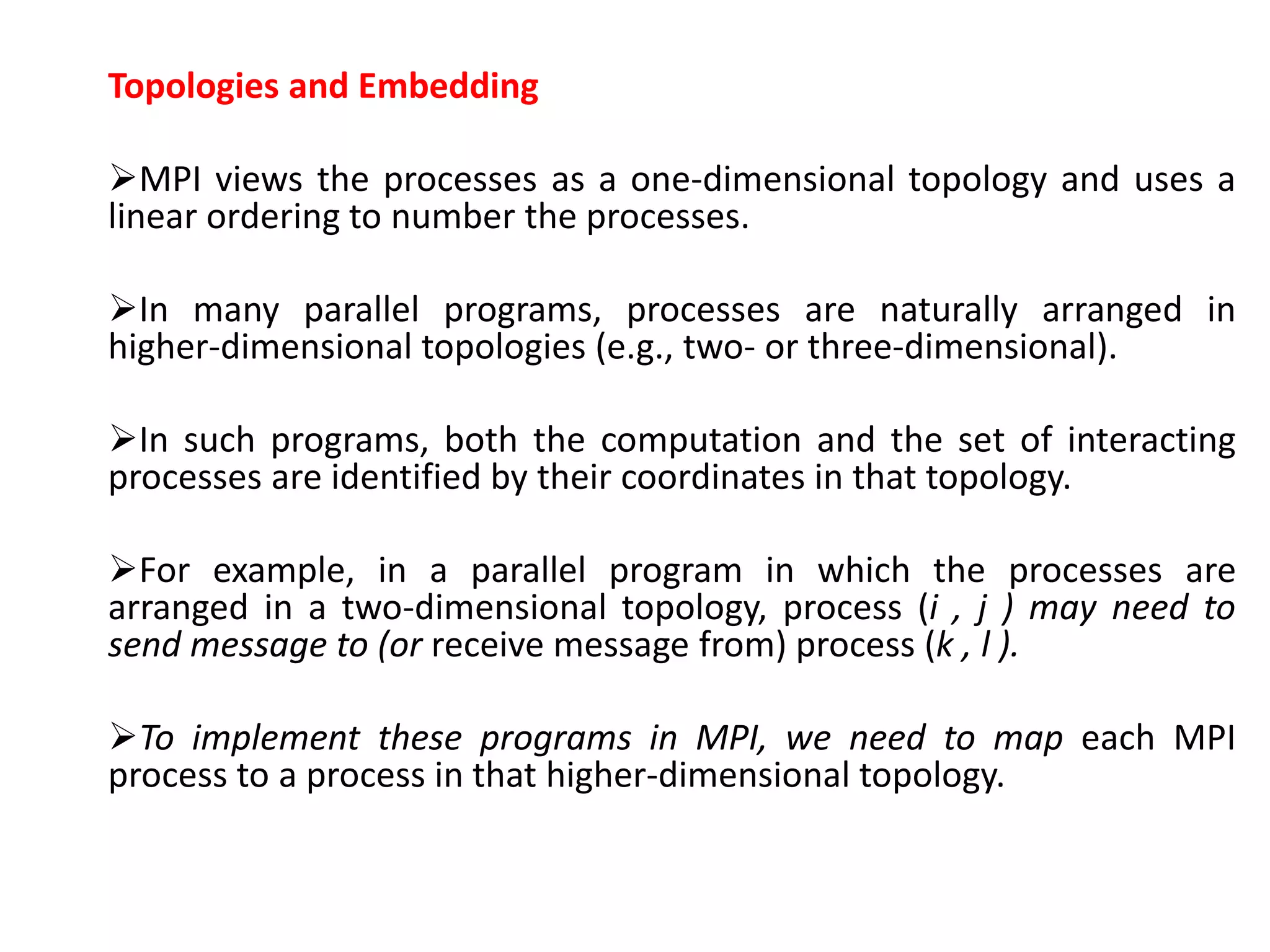

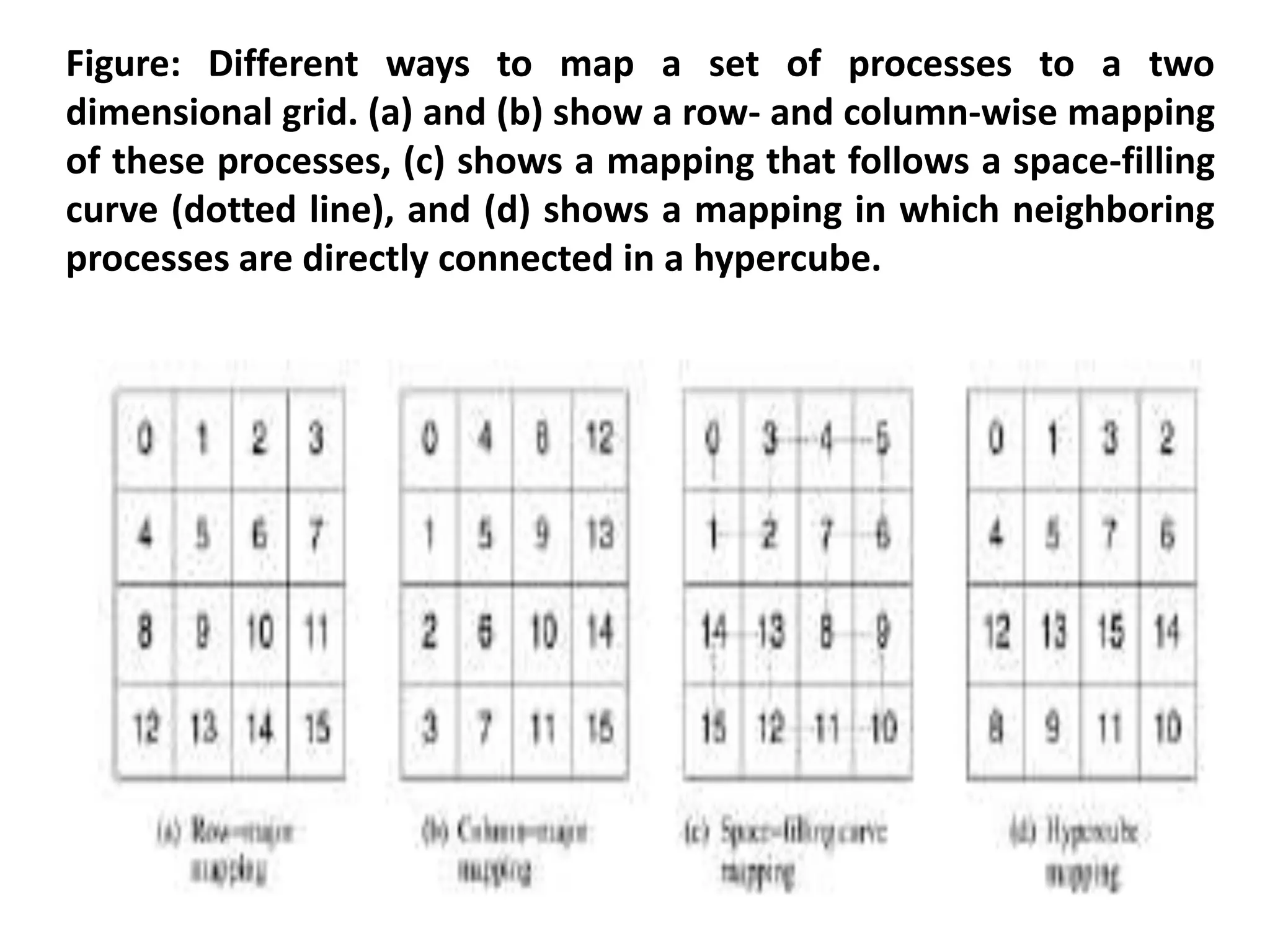


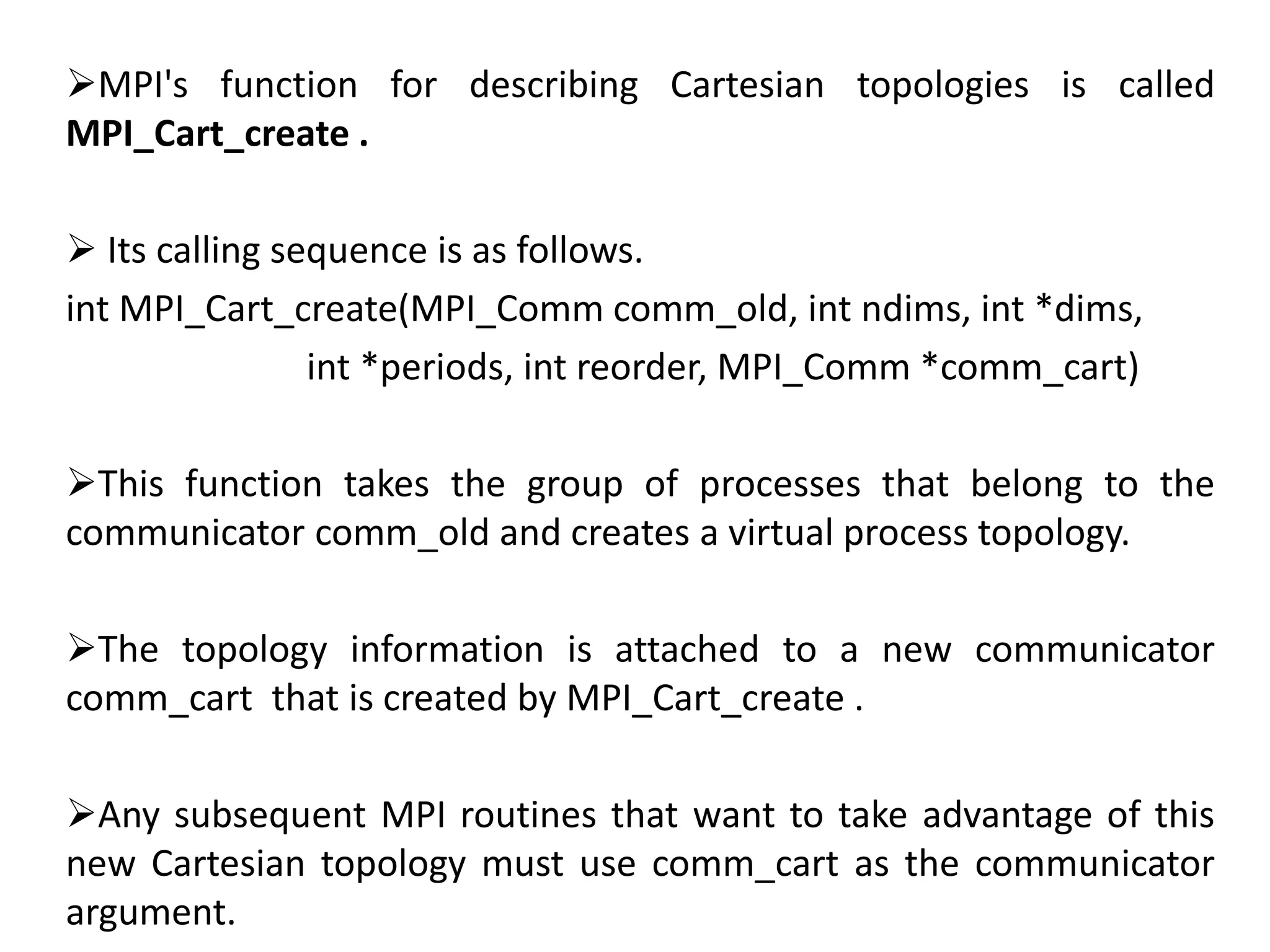
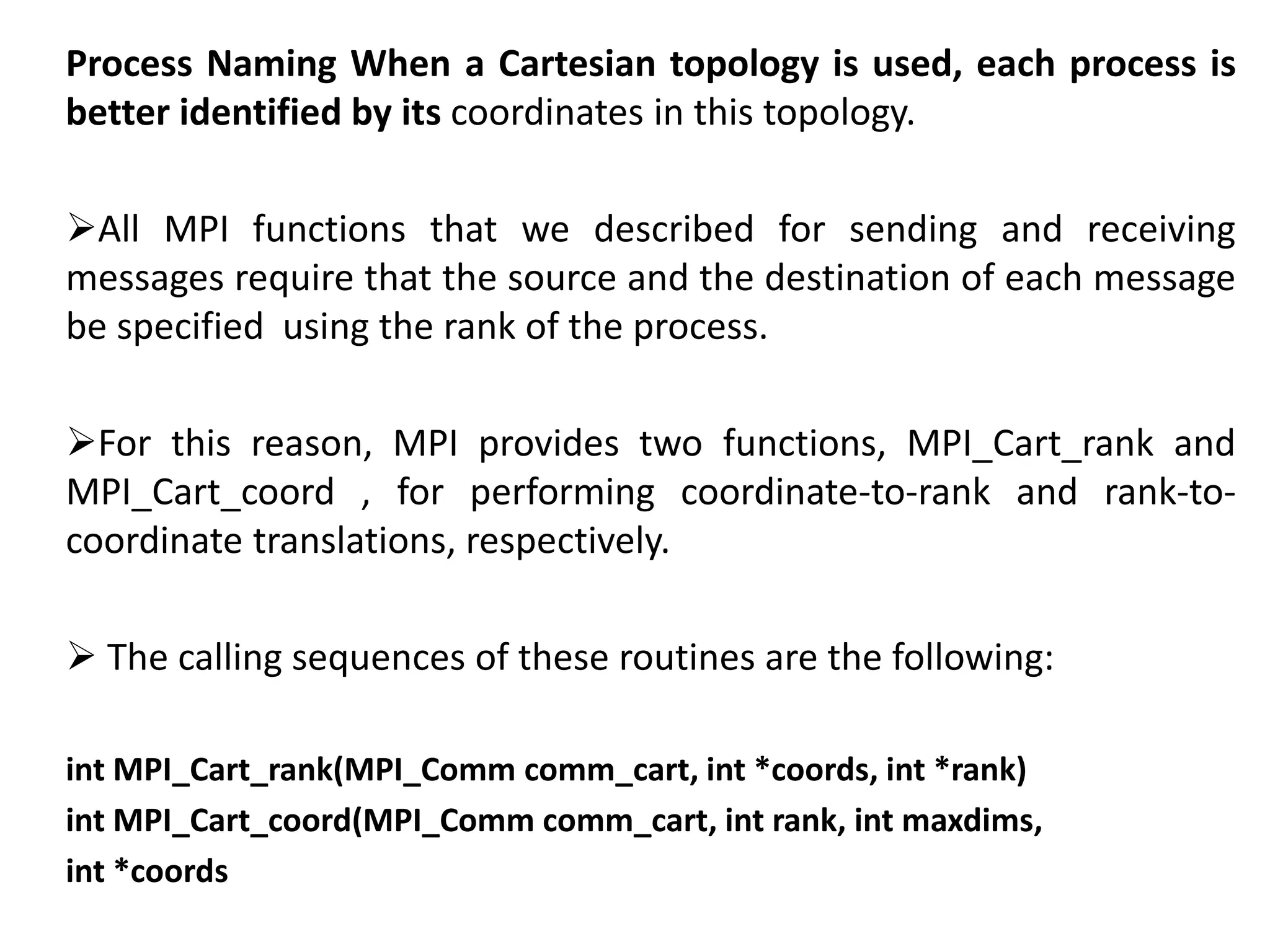
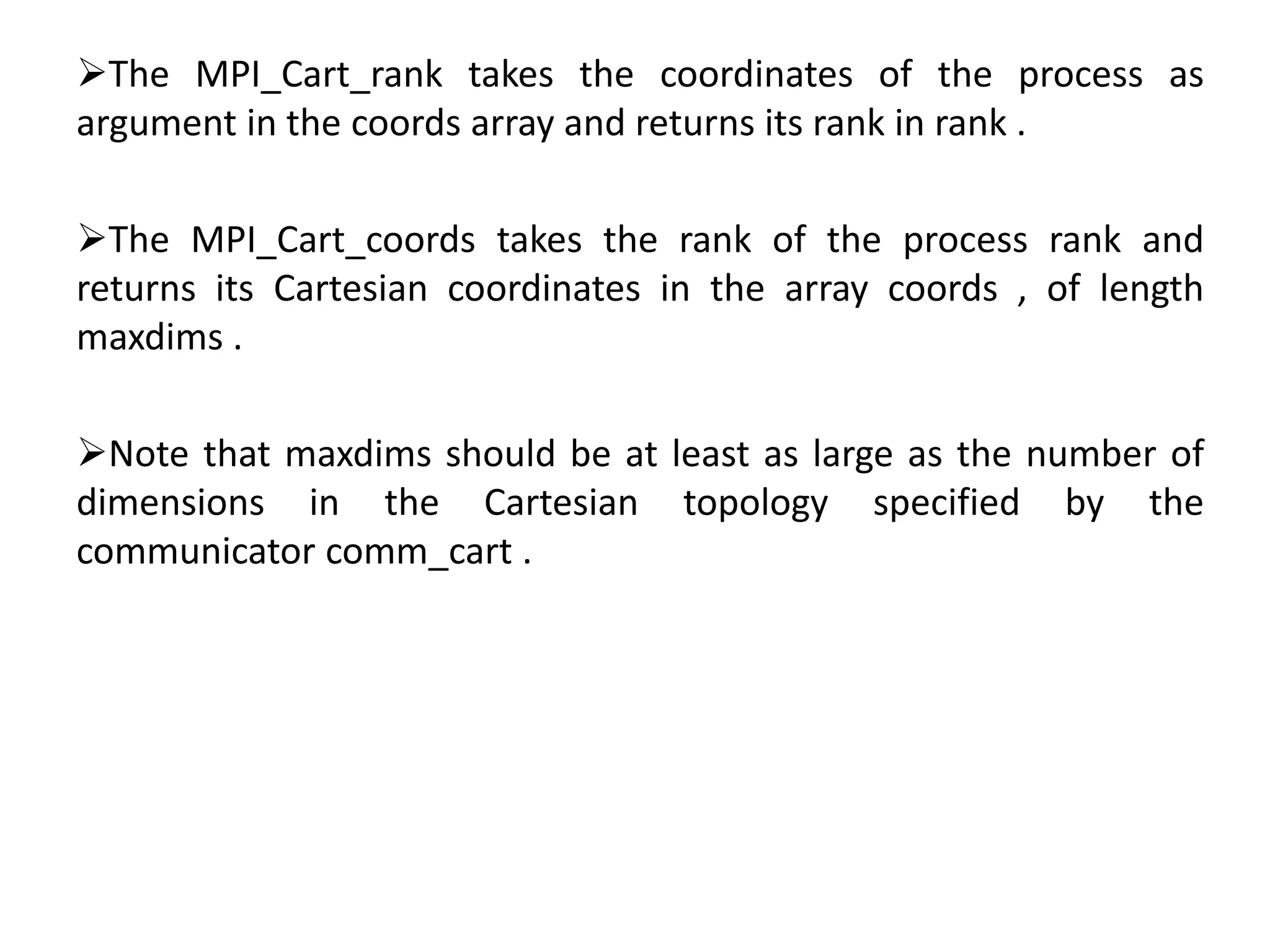
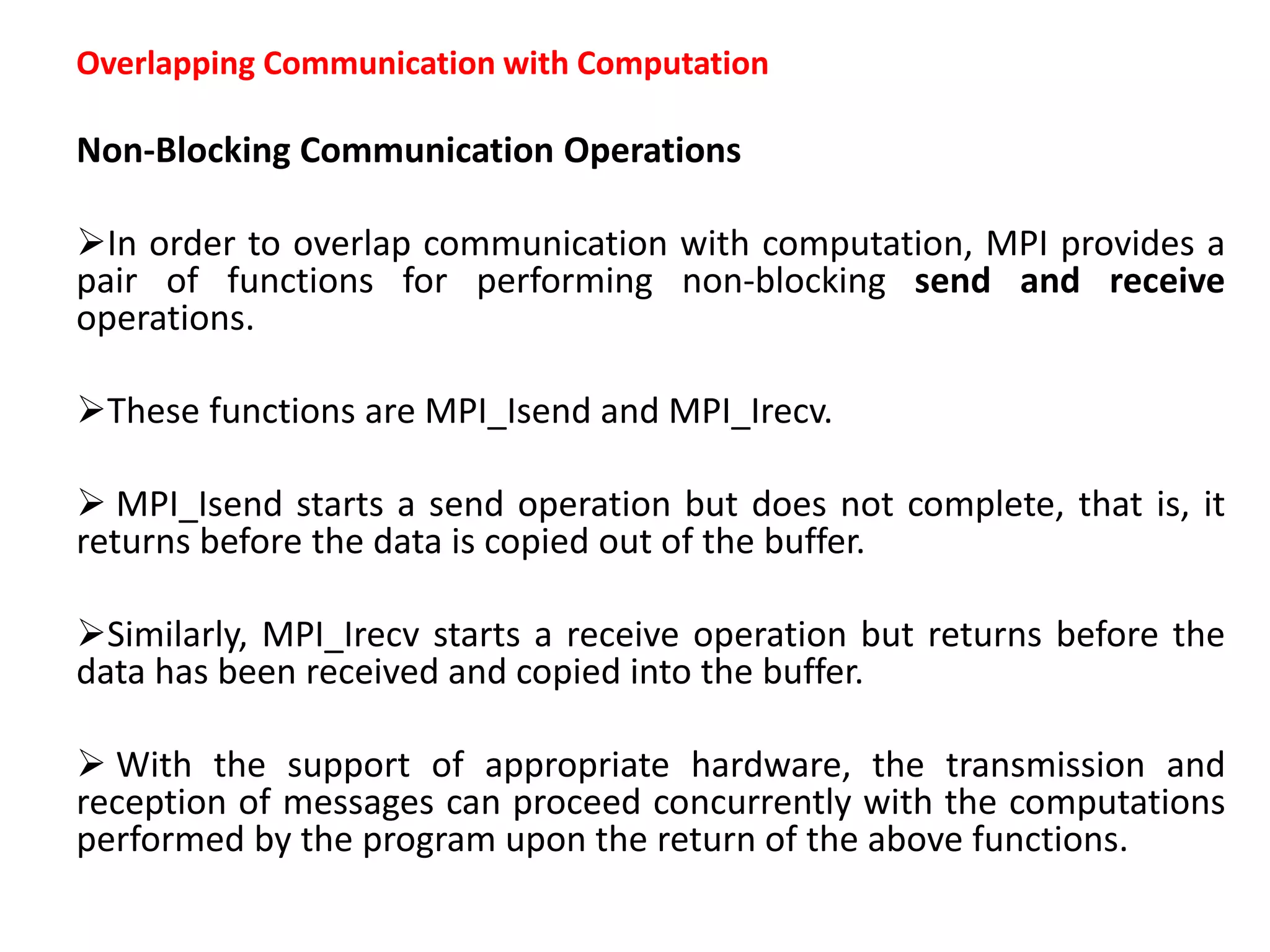

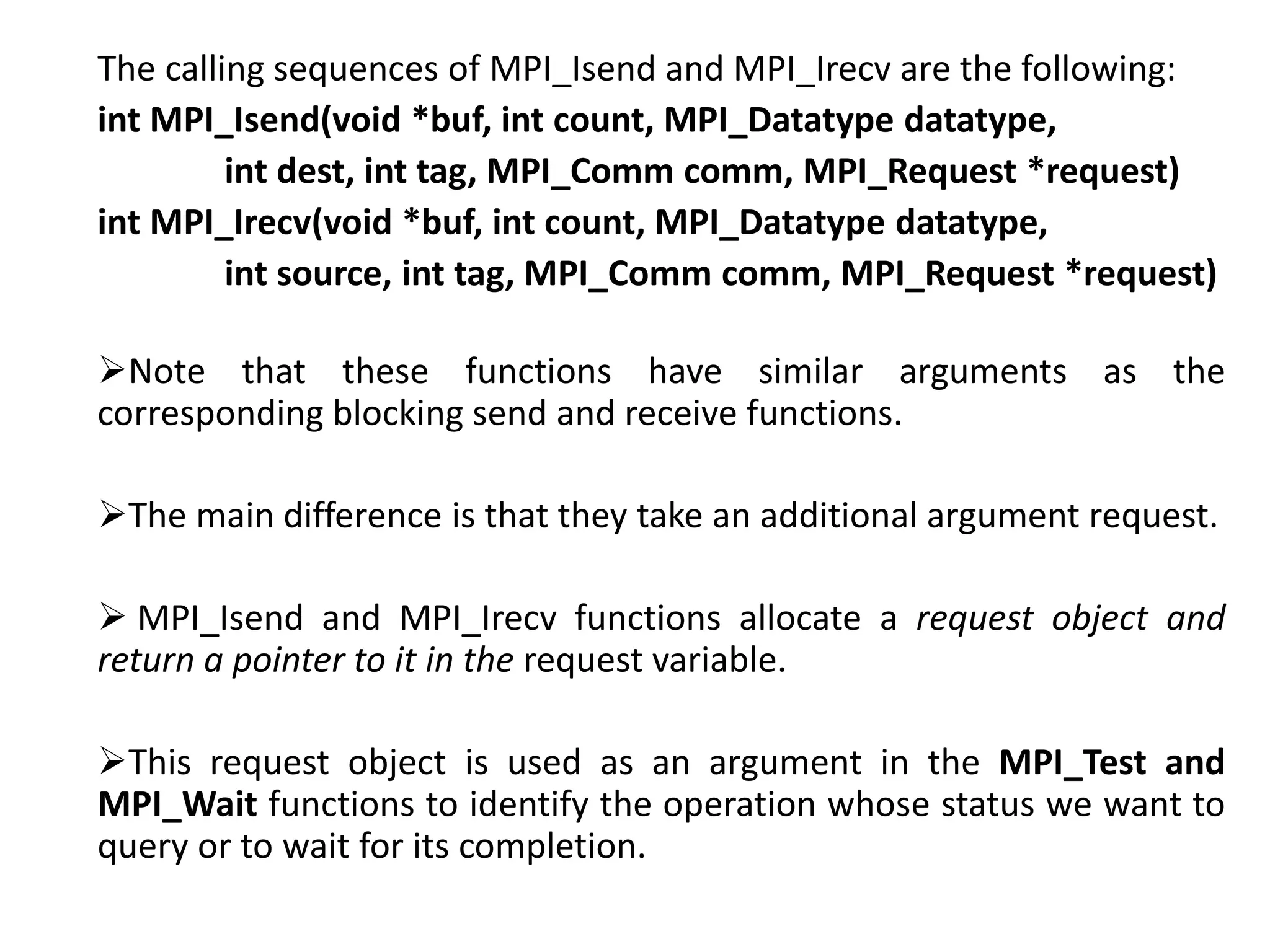
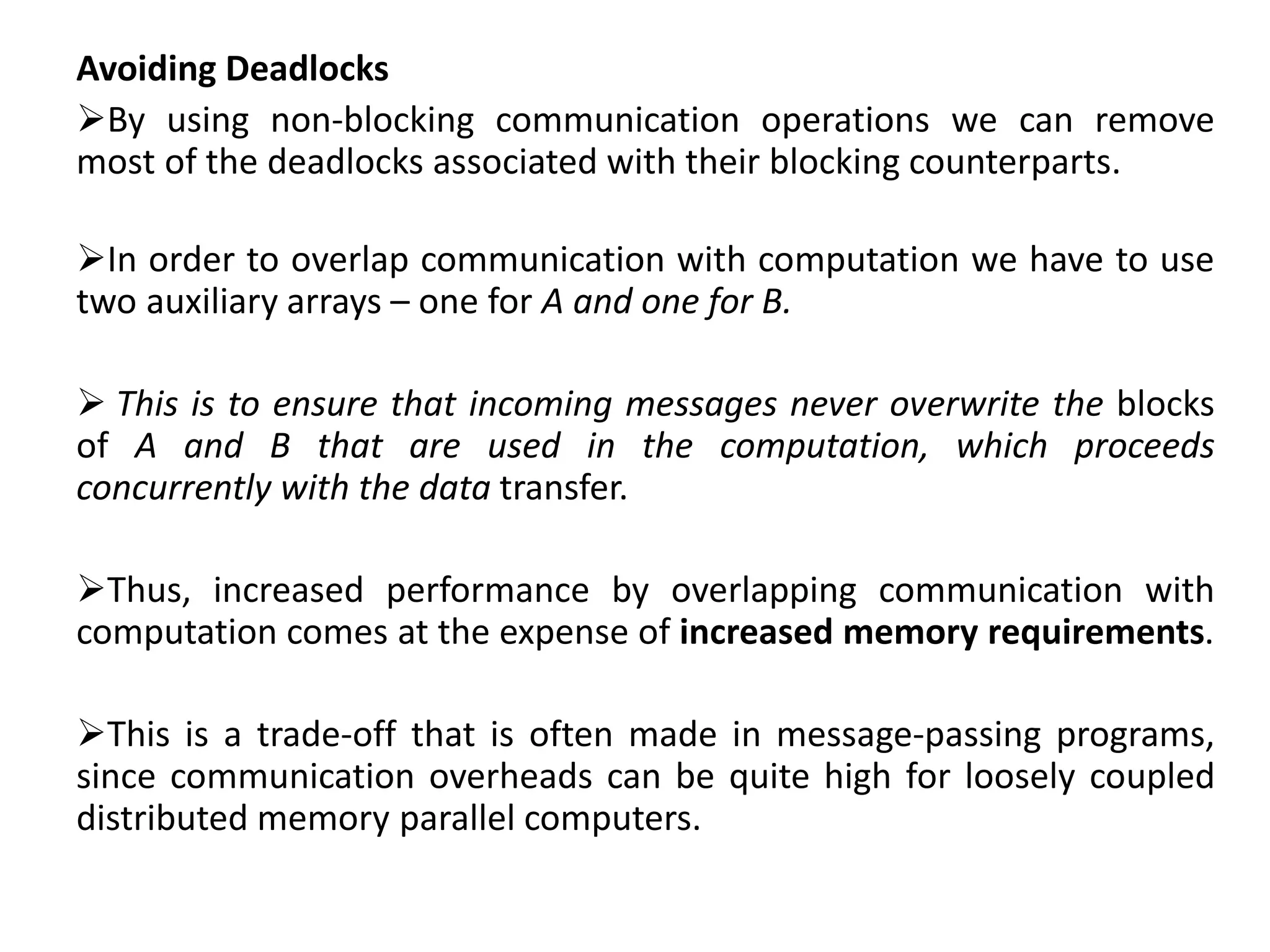
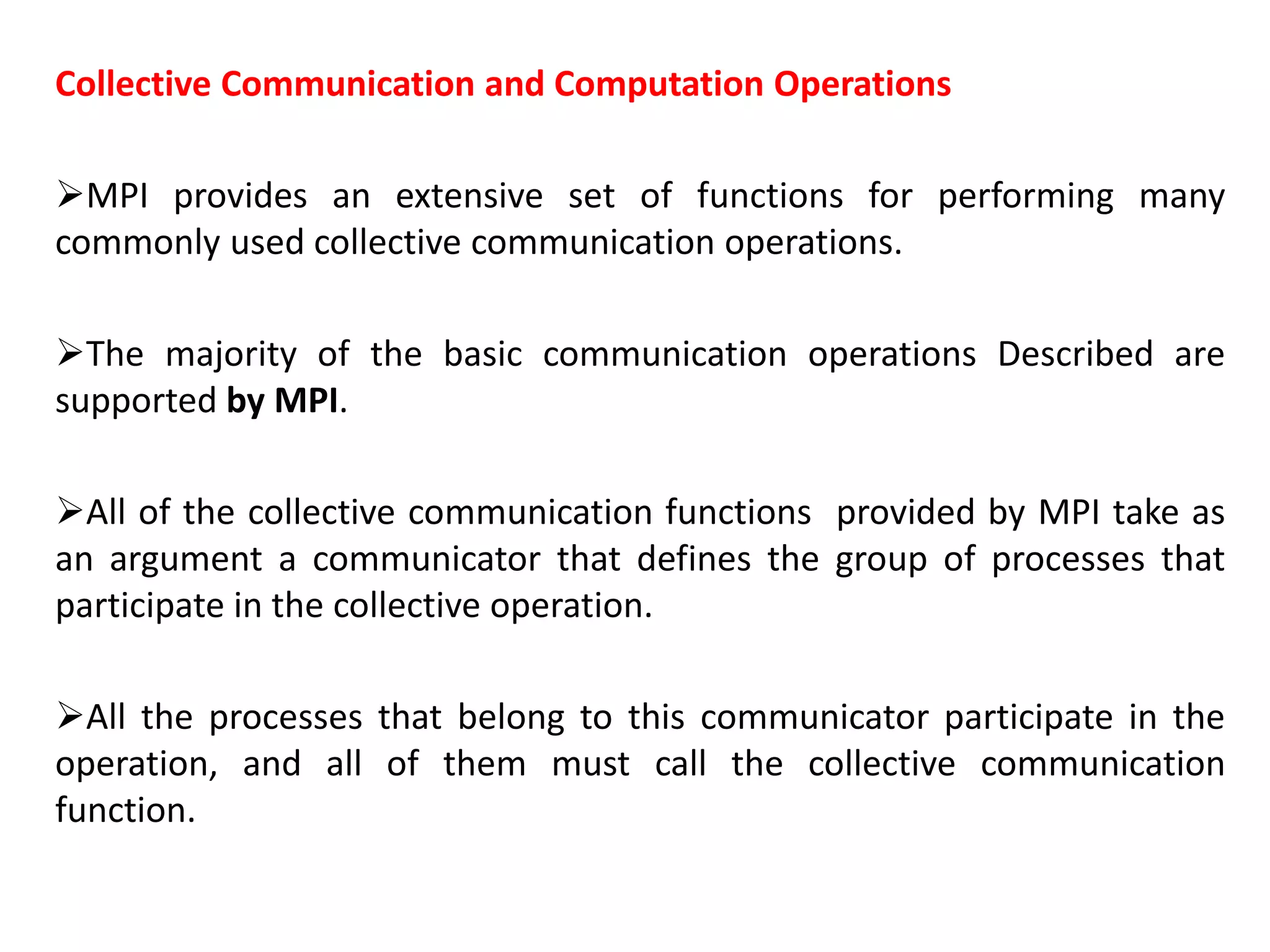
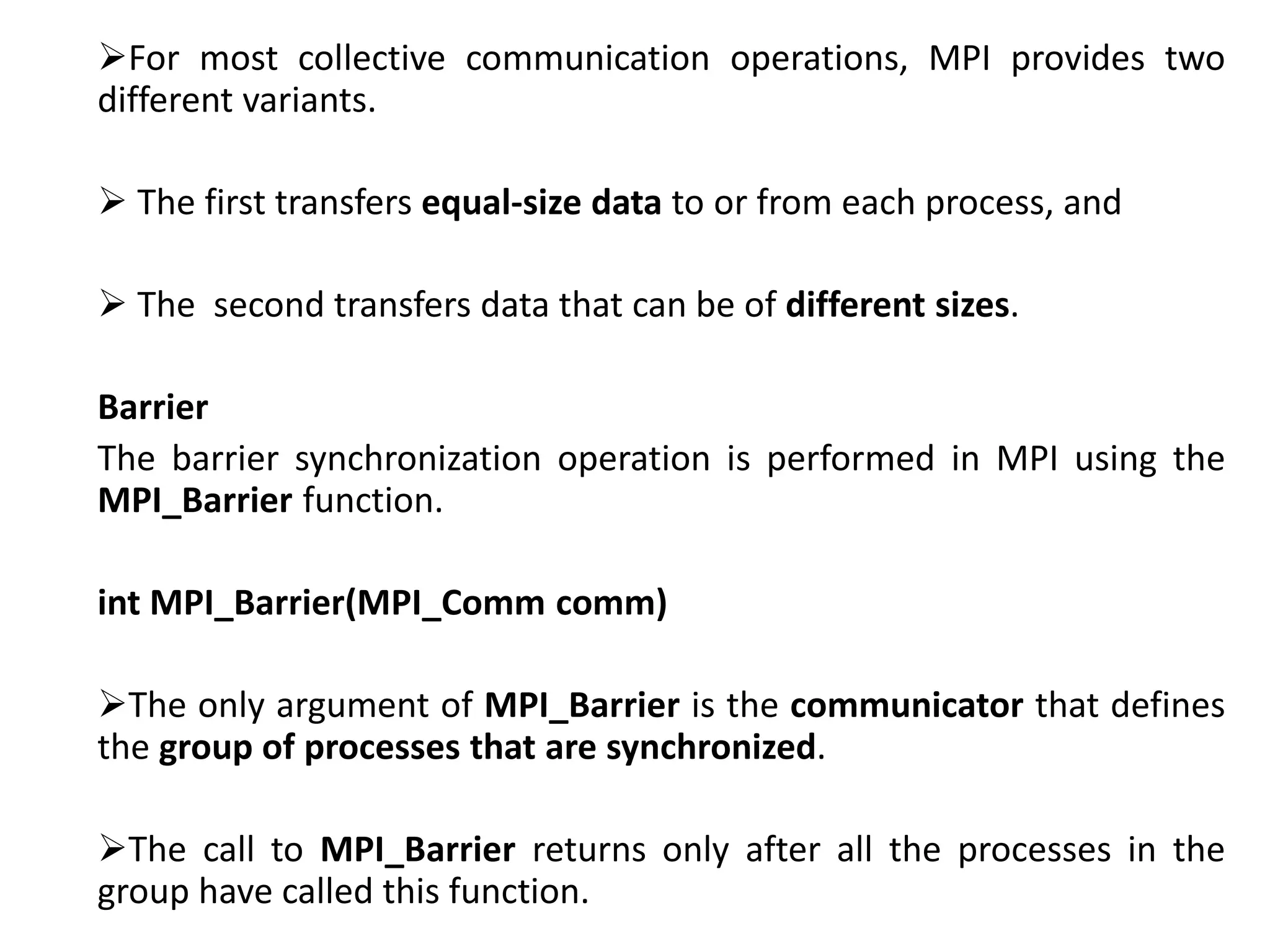
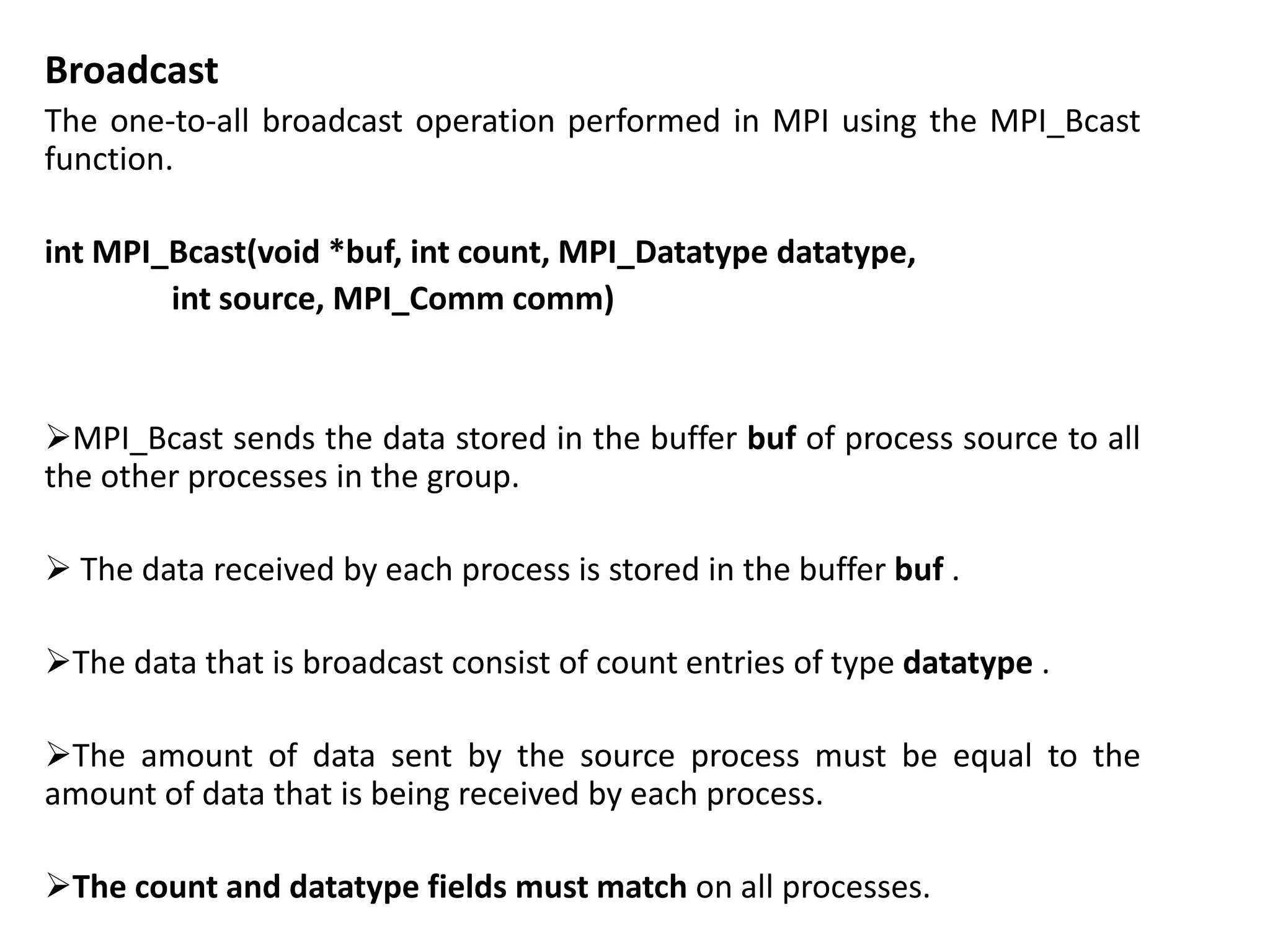
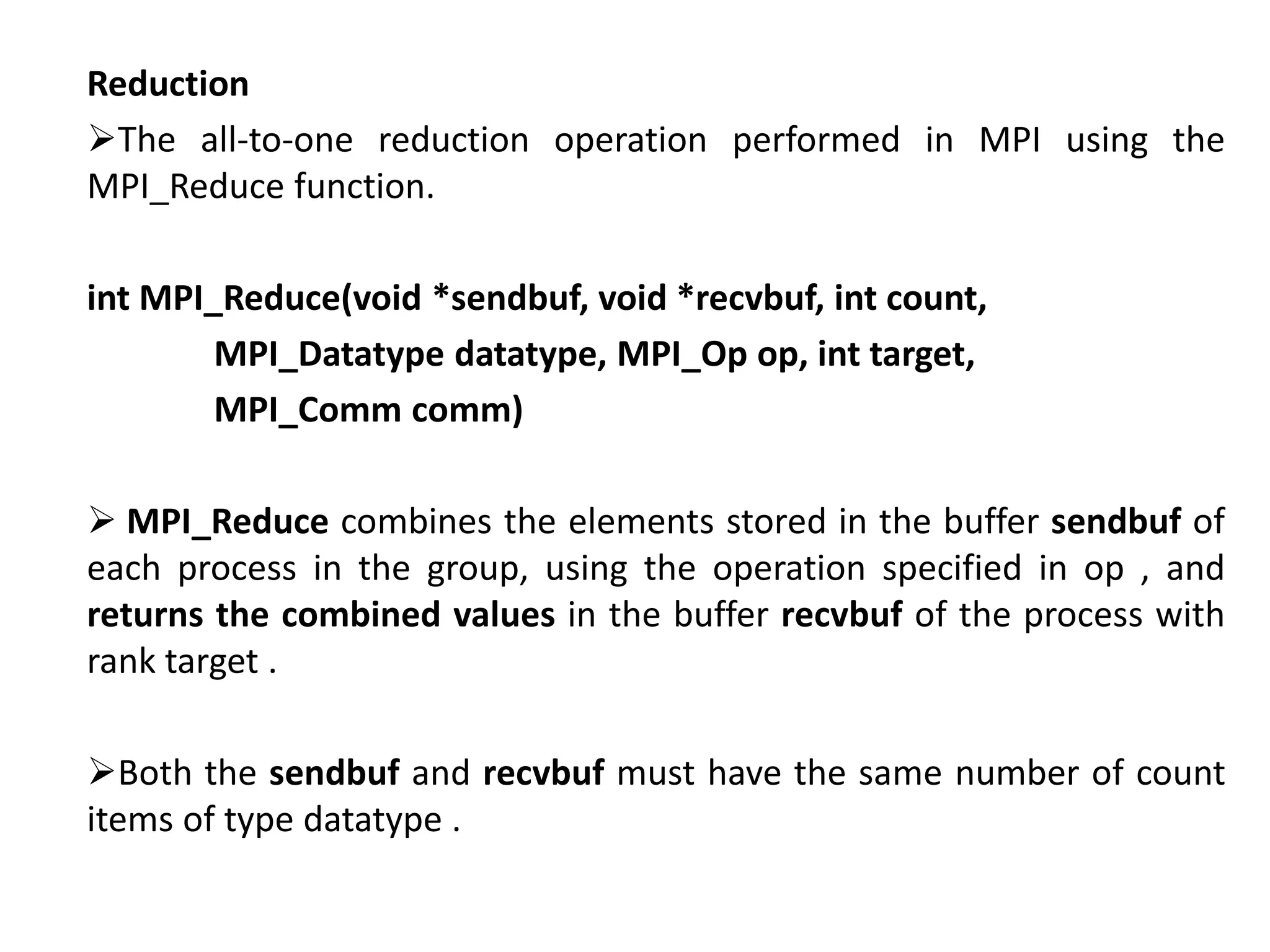
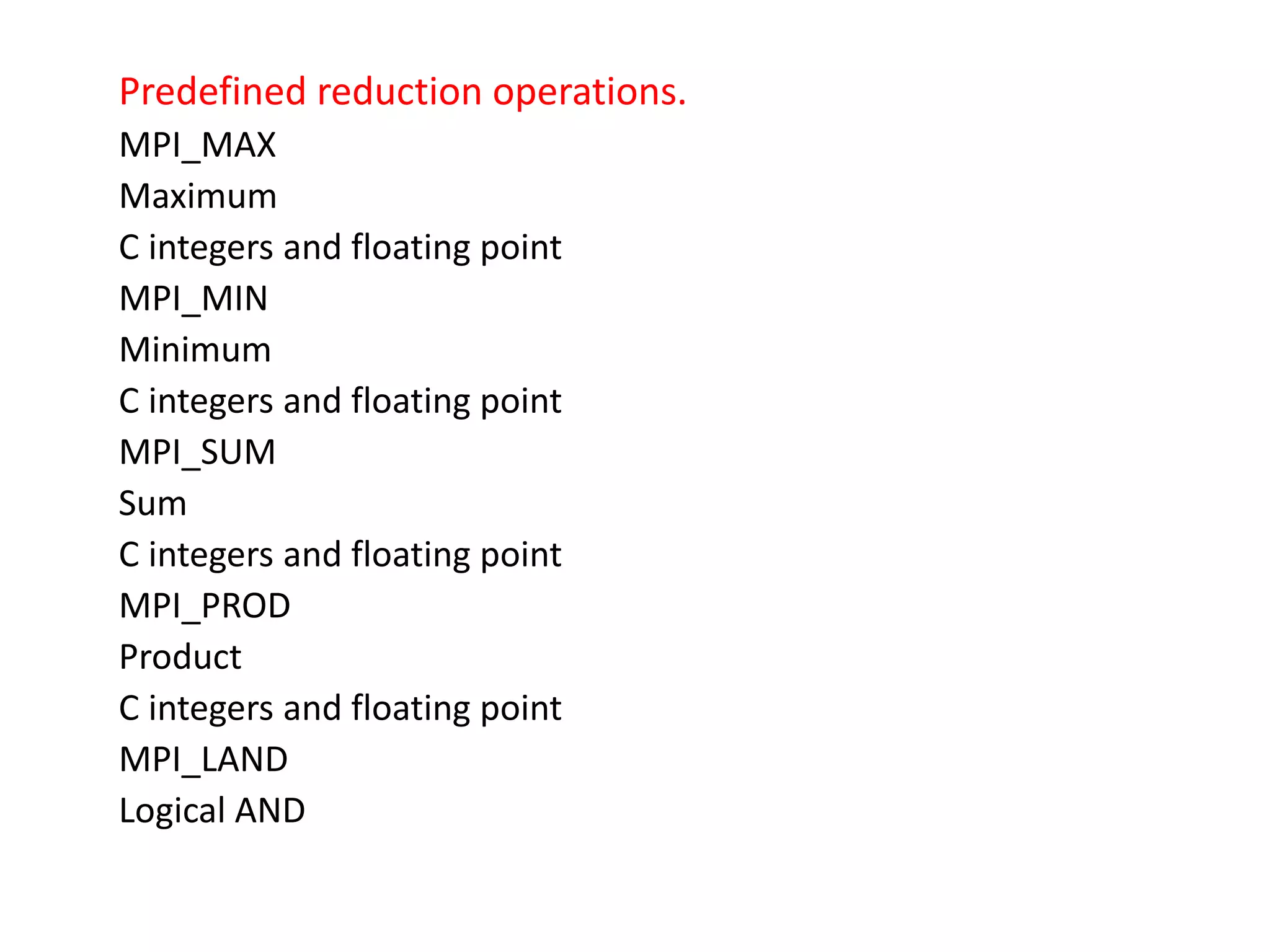

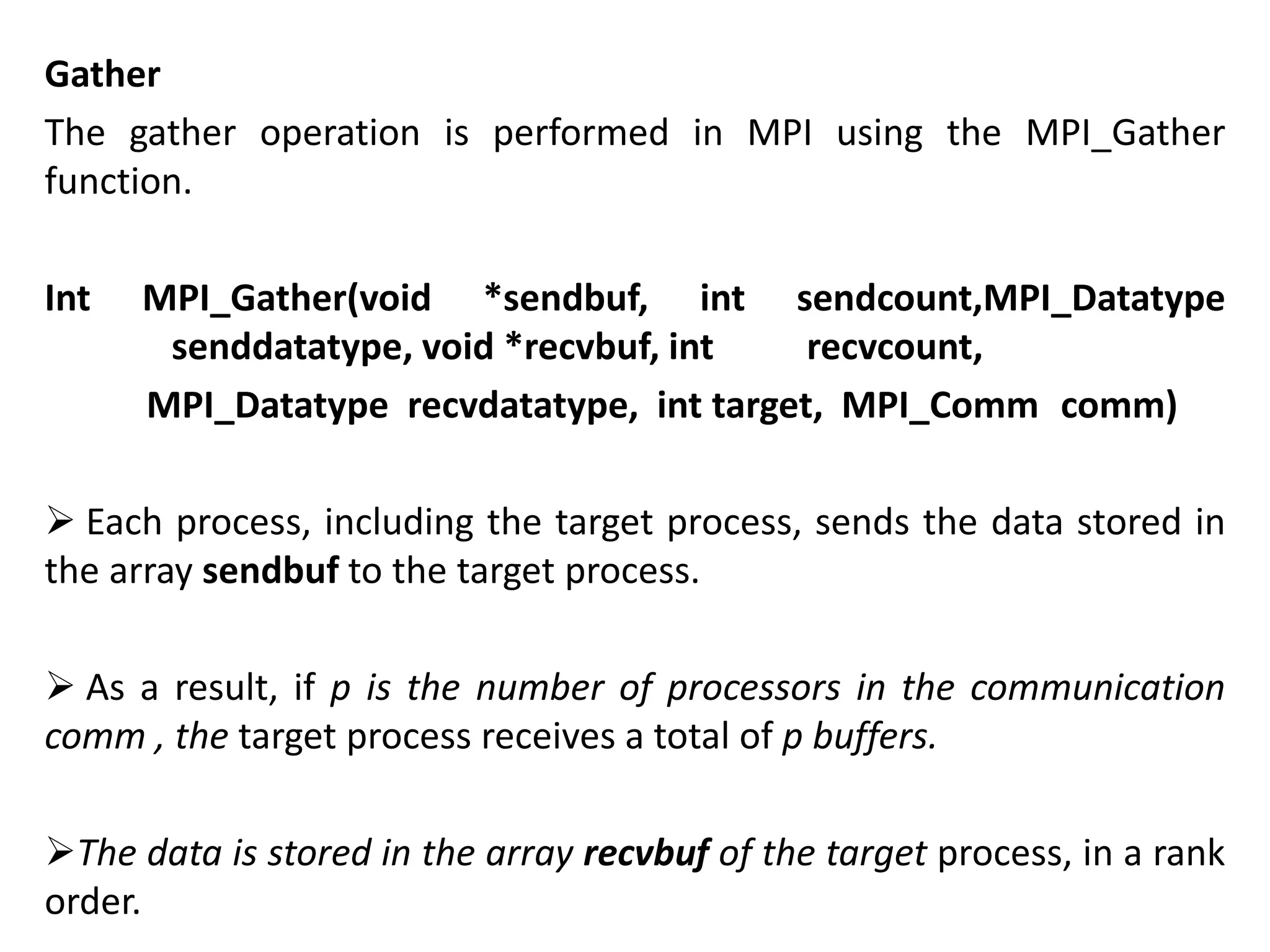
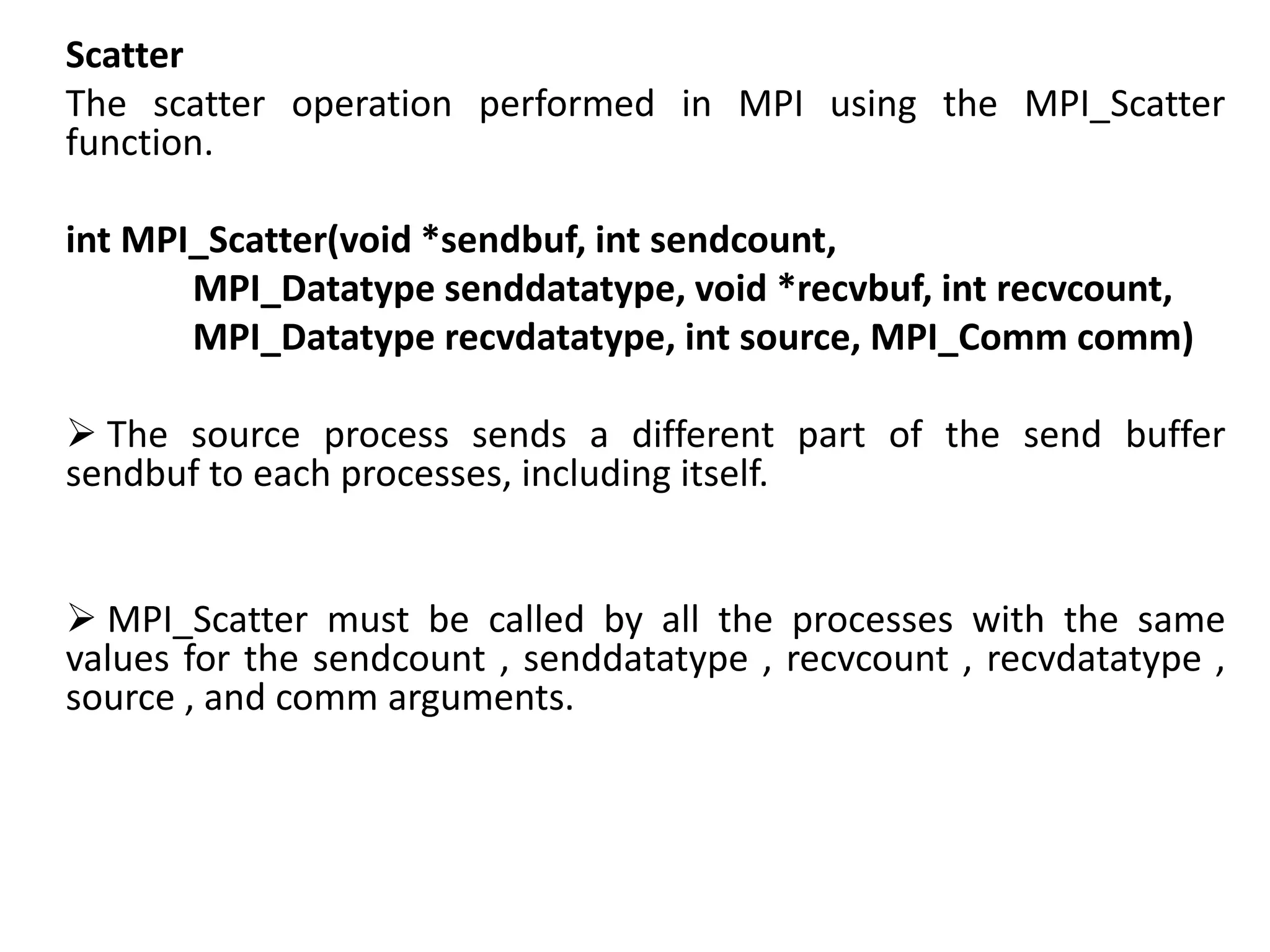

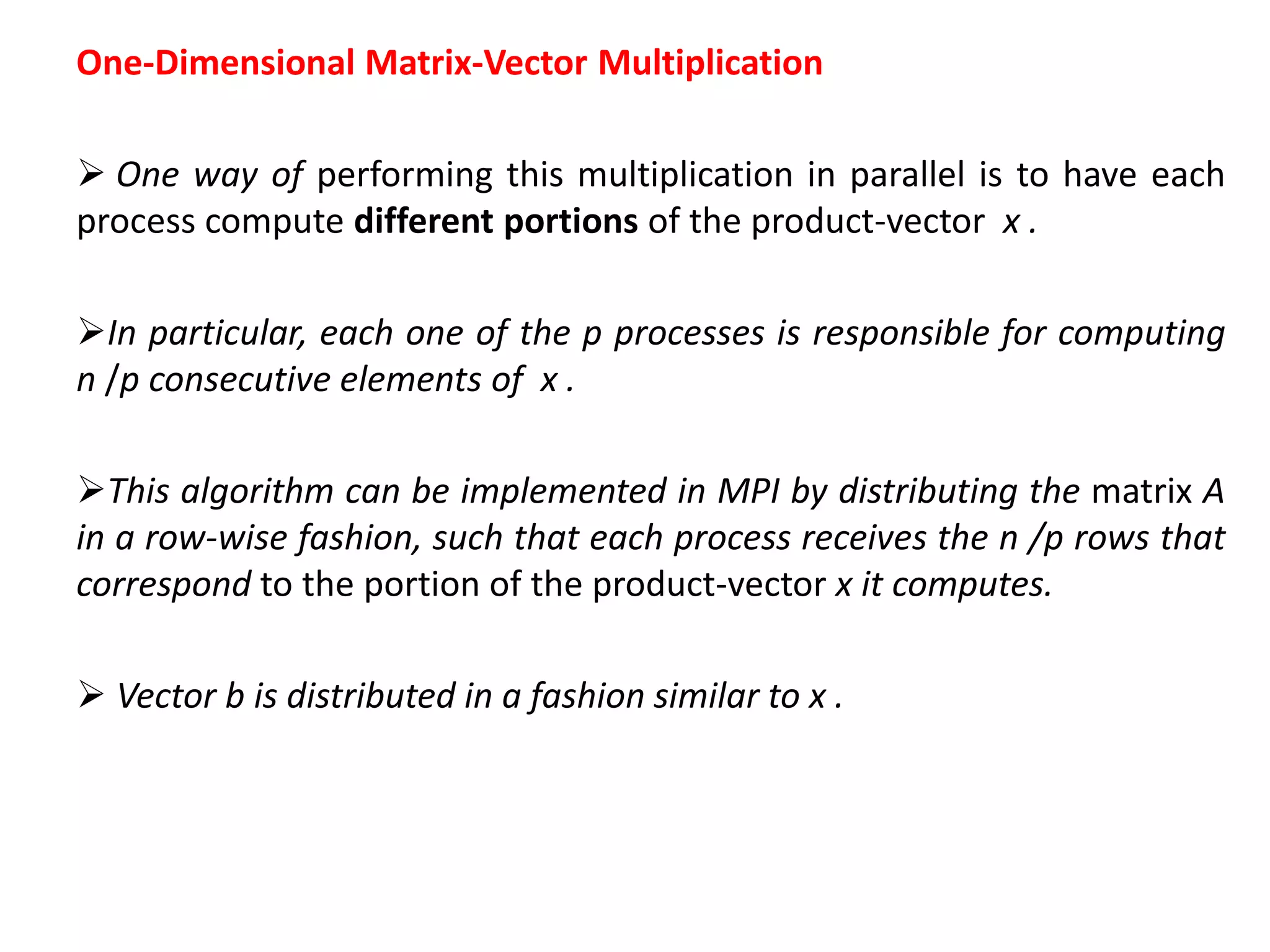
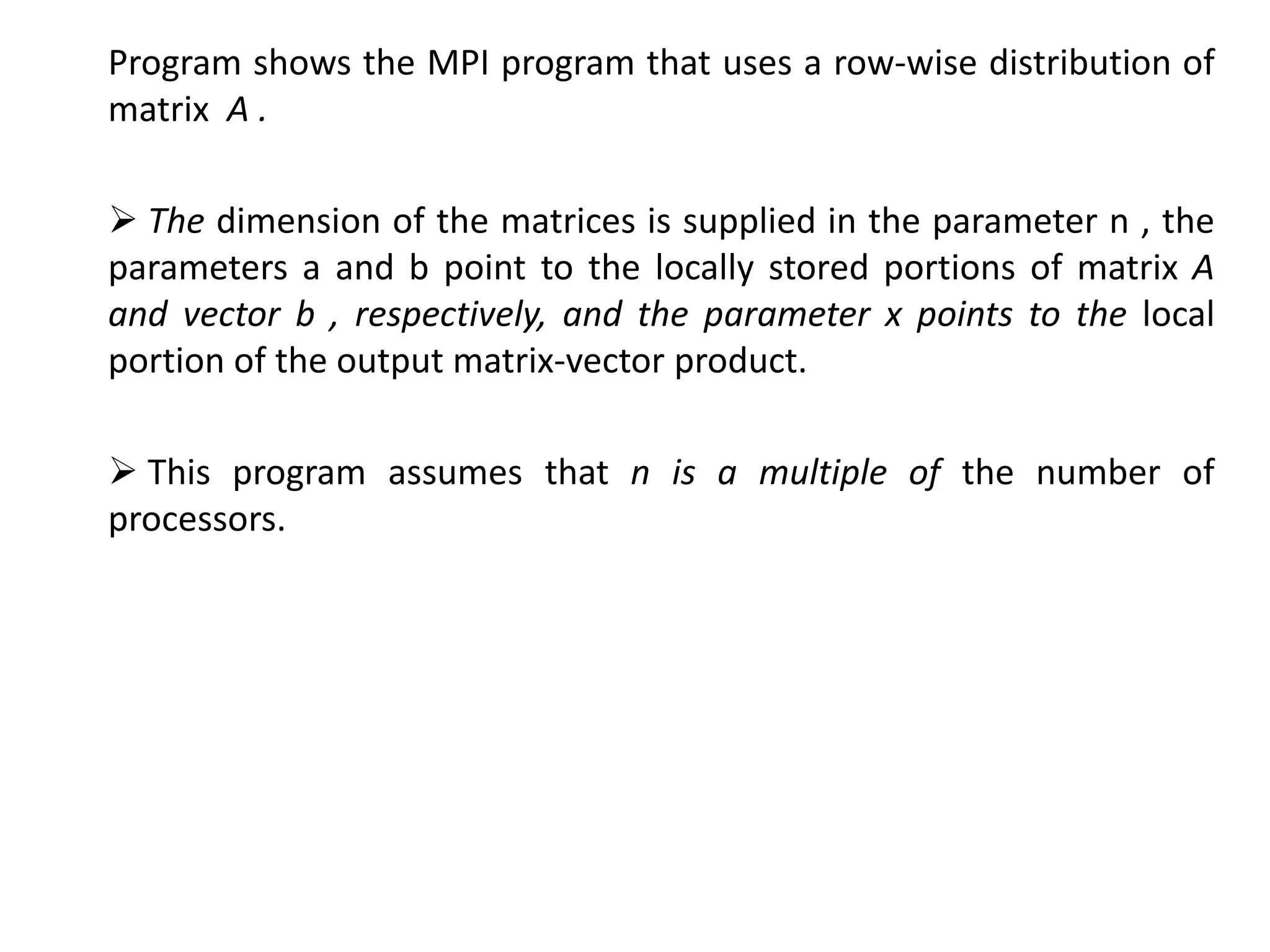
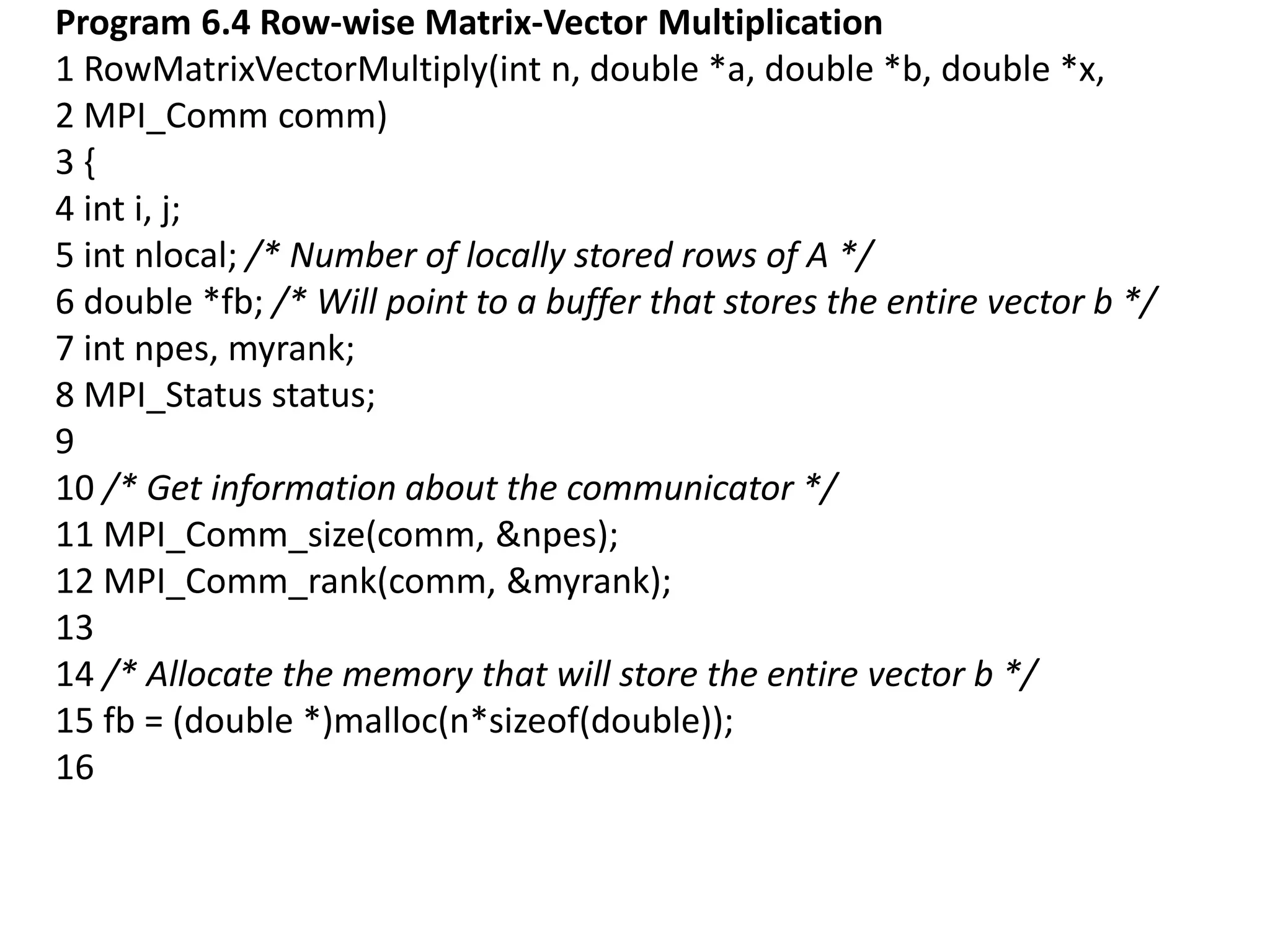
![17 nlocal = n/npes;
18
19 /* Gather the entire vector b on each processor using MPI's
ALLGATHER operation */
20 MPI_Allgather(b, nlocal, MPI_DOUBLE, fb, nlocal, MPI_DOUBLE,
21 comm);
22
23 /* Perform the matrix-vector multiplication involving the locally
stored submatrix 24 for (i=0; i<nlocal; i++) {
25 x[i] = 0.0;
26 for (j=0; j<n; j++)
27 x[i] += a[i*n+j]*fb[j];
28 }
29
30 free(fb);
31 }](https://image.slidesharecdn.com/mpi-230816193618-438e41db/75/MPI-pptx-76-2048.jpg)